










Ethereal and everlasting; where meditative process and creative freedom combine








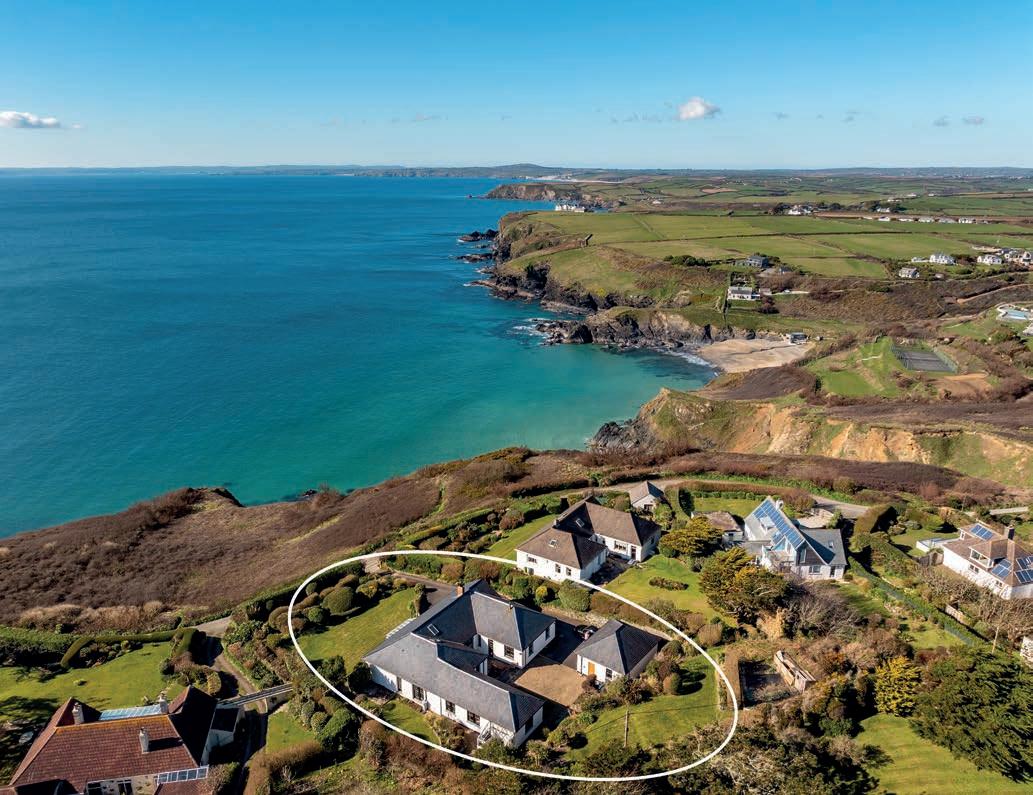
















Ethereal and everlasting; where meditative process and creative freedom combine













1. the act of driving something along
2. the flow or the velocity of the current of a river or ocean stream
1. to become driven or carried along, as by a current of water, wind, or air
2. to move or float smoothly and effortlessly
We invite you to continue your lifestyle voyage online. Find inspiring stories and uncover more luxury content on Instagram @driftcornwall. Join our exclusive e-journal community at drift-cornwall.co.uk to receive recipes, reviews and insider knowledge of some of Cornwall’s most-loved luxury destinations.
driftjournal.co.uk
driftjournaluk
A JOURNAL FOR THE DISCERNING




On the cover

Flowers drying at Botanical Tales. Image courtesy of Bex Partridge. As featured from page 42. botanicaltales.com



Head of Client Management
Des Glover – 07535 585613
des.glover@levenmediagroup.co.uk
Partnership Executive
Elly Burnard – 01326 574842 elly.burnard@levenmediagroup.co.uk
CEO
Ben Pratchett – 01326 574842 ben.pratchett@levenmediagroup.co.uk
Chairman & Founder
Andy Forster – 07711 160590 andy.forster@levenmediagroup.co.uk
PROUD TO BE PART OF

DRIFT is published by:
Engine House Media LTD
Holbrook, The Moors, Porthleven, Cornwall TR13 9JX
www.enginehousemedia.co.uk
www.levenmediagroup.co.uk
ISSN 2632-9891
© All rights reserved. Material may not be re-produced without the permission of Engine House Media Ltd. While DRIFT will take every care to help readers with reports on properties and features, neither Engine House Media Ltd nor its contributors can accept any liability for reader dissatisfaction arising from editorial features, editorial or advertising featured in these pages. Engine House Media Ltd strongly advises viewing any property prior to purchasing or considerations over any financial decisions. Engine House Media reserves the right to accept or reject any article or material supplied for publication or to edit such material prior to publication. Engine House Media Ltd cannot take responsibility for loss or damage of supplied materials. The opinions expressed or advice given in the publication are the views of the individual authors and do not necessarily represent the views or policies of
Editor
Hannah Tapping
hannah.tapping@levenmediagroup.co.uk
Creative Designers
Spencer Hawes
Jamie Crocker
Finance & HR Manager
Charlotte Forster
charlotte.forster@levenmediagroup.co.uk
Credit Control
Tracy Dart – 01326 574842
tracy.dart@levenmediagroup.co.uk
Engine House Media Ltd. It is suggested that further advice is taken over any actions resulting from reading any part of this magazine.
Engine House Media Ltd is a multi-platform media business with a passion for everything Cornish. Visit www.enginehousemedia. co.uk to find out more. Our mission is to create READ-WATCHEXPERIENCE media opportunities marrying together consumers with the fabulous businesses across Cornwall. Our publishing and marketing teams are specialists in creating print and online communications, devised to achieve a range of marketing objectives. With over 20 years of marketing, brand management and magazine experience we develop effective communications that deliver your message in a credible and creative way. We operate across all media channels, including: print, online and video.
Artists engage with the landscape through a multitude of lenses, each offering a unique perspective. For some, it is the vastness of the horizon that captures their gaze; for others, it is the intimacy of a single tree or a fleeting shadow. These differing viewpoints shape how we understand the land, not as a static entity, but as a living, breathing composition of light, texture and form. Through their eyes, we are invited to see the world anew, discovering beauty in both the grand and the minute. In the intersection of these varied perspectives lies the quiet power of stillness. As artists interpret the landscape, they capture not just the land itself but the silent dialogue between it and the viewer. In these quiet moments, time seems to fold in on itself, and the landscape becomes a reflection of inner stillness. Sometimes this moment of stillness and quiet is more powerful than movement and noise, a space
where beauty is found in the unnoticed. Photographer Lauren Wiig-Aspland (19) speaks in images. Where others rely on words, she finds stories in the fall of light and shadow, the quiet poise of hands. Her work is deeply rooted in the natural environment, where she seeks out scenes that evoke a sense of peace. Max Leuchars’ daily environment is reflected in his work (30), where exploring new subjects helps him to evolve as a painter, experimenting with new angles and techniques. Floral artist, grower, educator and author Bex Partridge finds her peace in the meditative process of growing and drying flowers. With Botanical Tales (42), she creates everlasting floral art with soul. In these moments, we find clarity; an invitation to slow, to breathe, to observe. We invite you to join the reflection and experience a space where time holds no sway.

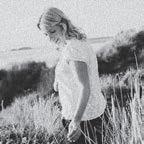
We have an exceptional and loyal team here at Leven Media Group but as a fast-growth business we’re always interested in talking to outstanding individuals. If you’re a superstar of extraordinary talent then we would love to hear from you.
Call us on 01326 574842 or email enquiries@enginehousemedia.co.uk
Visit driftjournal.co.uk to read more about our writers.



Providing life changing opportunities for young people across the UK www.diveprojectcornwall.co.uk








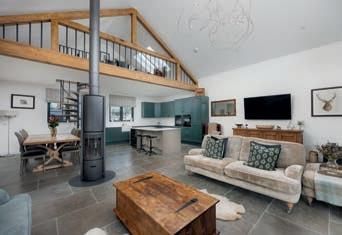
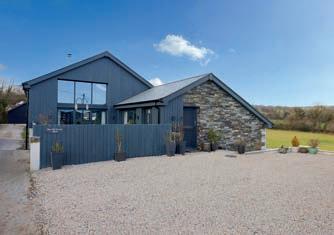




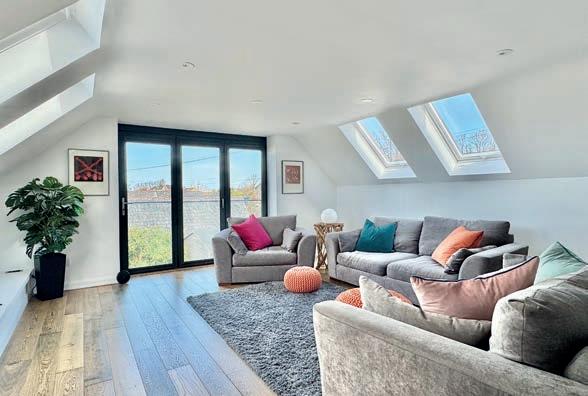
Thoughtfully
converted & exquisitely presented three double bedroom detached barn conversion, situated just
above the Camel Estuary
Tredougan House | Nr Padstow | £795,000 guide
The property successfully combines original character with contemporary fixtures and fittings to create a hugely welcoming ambience in a reverse living style that maximises the views across the Camel Estuary, the iron bridge to Padstow. Within approximately 0.5 miles is direct access to the Camel Trail that in turn leads all the way to Padstow itself.



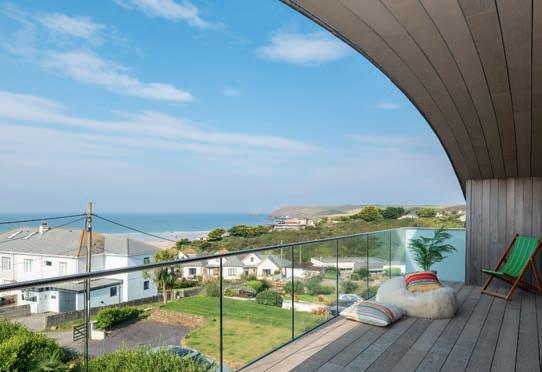







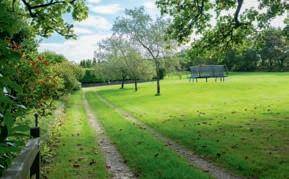
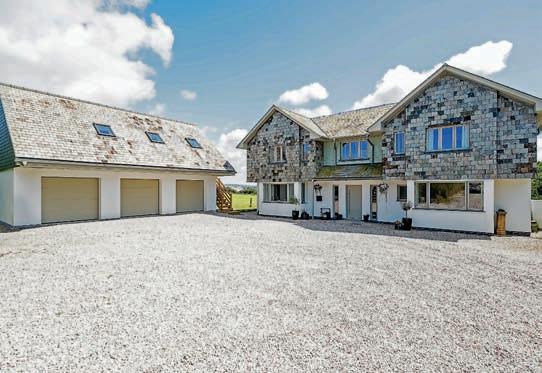



SPAVEN MOR | TREBETHERICK | £1,250,000




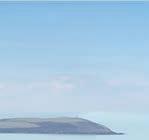




SPAVEN MOR IS A STYLISH FIVE-BEDROOM HOME IN TREBETHERICK, PERFECTLY PLACED FOR DAYMER BAY, POLZEATH, AND ROCK. WITH SPACIOUS LIVING, A PRIVATE BALCONY, AND GENEROUS GARDENS, IT’S IDEAL FOR COASTAL LIVING.
COX HILL HOUSE | CHACEWATER | £925,000


COX HILL HOUSE OFFERS A FIVE-BEDROOM HOME, TWO ANNEXES, AND GLAMPING FACILITIES WITHIN 2.5 ACRES OF GARDENS AND GROUNDS. WITH STRONG INCOME POTENTIAL AND EASY ACCESS TO TRURO AND BOTH COASTS, IT’S AN IDEAL LIFESTYLE OR INVESTMENT OPPORTUNITY.

PLOT 20, ST PETROC | PADSTOW | £784,995

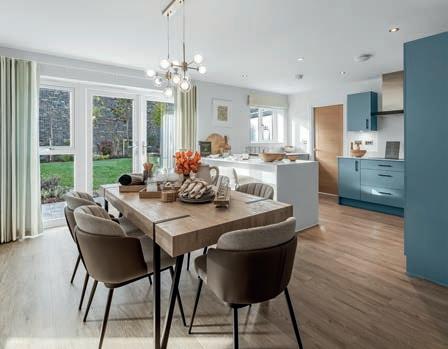
THE PRIMROSE IS A THOUGHTFULLY CRAFTED 3-BEDROOM DETACHED BUNGALOW. THE OPEN-PLAN KITCHEN AND DINING AREA CREATE A BRIGHT, AIRY SPACE. THE LIVING ROOM OFFERS A COZY RETREAT, COMPLETE WITH PATIO DOORS THAT OPEN TO THE GARDEN, ENHANCING THE CONNECTION BETWEEN INDOOR AND OUTDOOR SPACES.
UPLANDS | ST COLUMB MAJOR | OIEO £800,000


A 4 BEDROOM, DISTINGUISHED, ARCHITECT-DESIGNED, GENTLEMAN’S RESIDENCE, BUILT IN 1911, WAS ORIGINALLY COMMISSIONED FOR A RETIRED SEA CAPTAIN AND IS RICH IN PERIOD CHARACTER WITH SUBTLE NAUTICAL INFLUENCES.

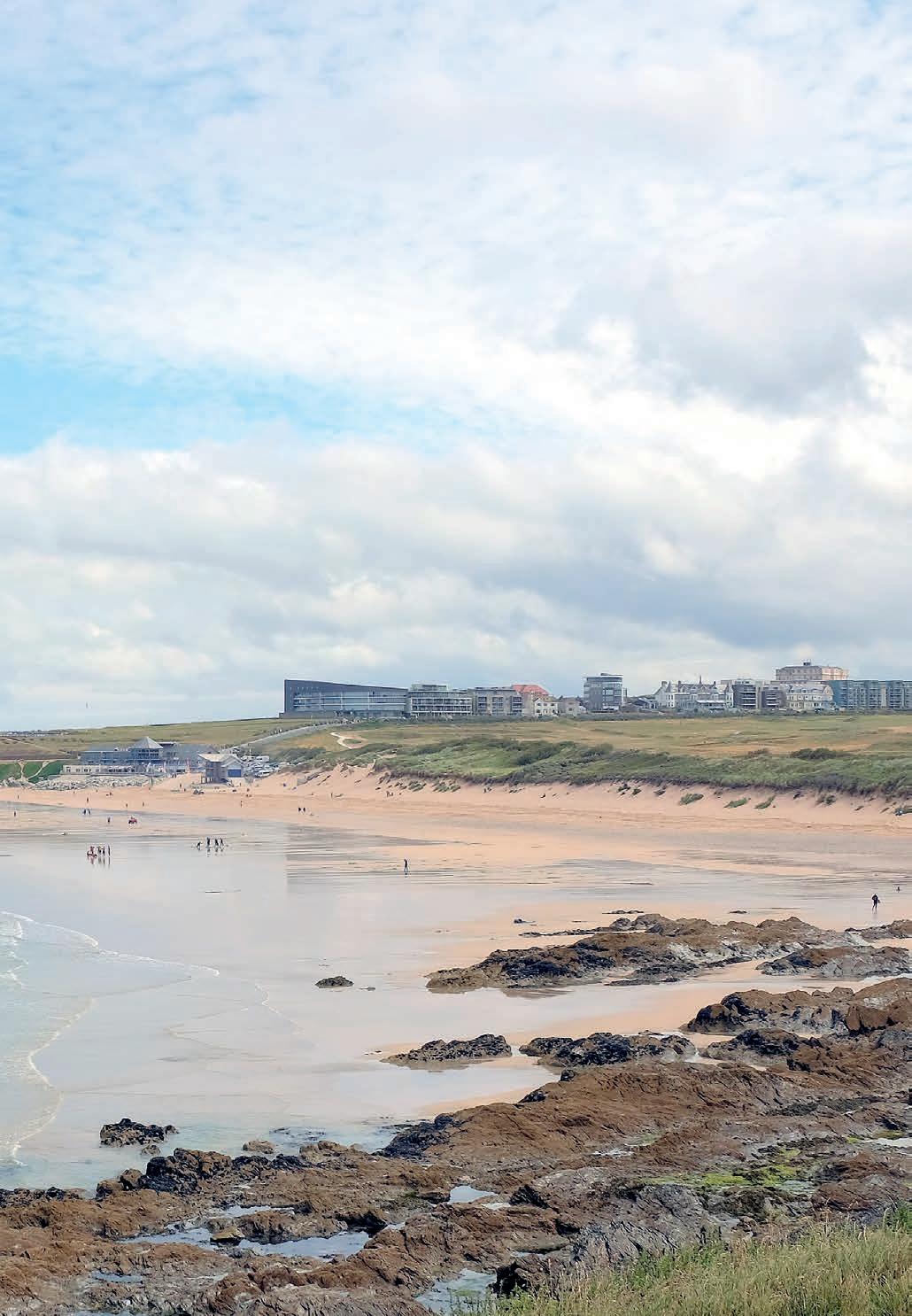
Welcome to Salo Bay - where modern design meets coastal charm, and sustainability is built into every detail. Overlooking the iconic Fistral Beach, these luxury apartments are more than a place to live - they're a lifestyle upgrade. From sunrise ocean views to sunset strolls along the beach, you'll experience the best of Cornish coastal living, all whilereducing your environmental impact.

Built to Verto Homes' award- winning specification, Salo Bay combines cutting-edge technology, natural materials, and contemporary design to create homes that work for you and the planet. Witheco- conscious design, and a location that's second to none, Salo Bay is your chance to live luxuriously and sustainably in one of Cornwall's most desirable settings. Follow us online for updates, and register your interest today to be part of this exciting new chapter.
LAUNCHING SPRING 2025. DON’T MISS YOUR CHANCE TO SECURE A HOME IN ONE OF CORNWALL’S MOST SOUGHT-AFTER LOCATIONS. REGISTER YOUR INTEREST TODAY.







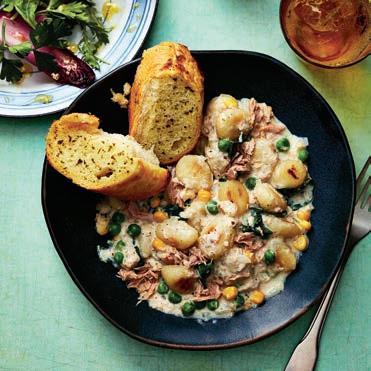














19 THE SHAPE OF LIGHT
Through the lens of Lauren Wiig- Aspland
30 THE PAINTER’S PAINTER
Rising talent Max Leuchars brings the historic traditions of impasto and sgraffito to a new audience
42 THE ART OF FLOWERS
In conversation with floral artist, grower, educator and author, Bex Partridge
EFFORTLESS DINNERS
Recipes from food writer Amy Sheppard’s everyday essential cookbook 72 DAZZLING ELEGANCE
The latest jewellery collection from Michael Spiers 74 REIMAGINING THE MUSEUM
Soaking up the past, present, and future at Cornwall’s new-look museum
85 A MASTERCLASS IN KITCHENS
The transformation of culinary spaces with function and beauty
99 THE DEEPER LOOK
Photographer William Arnold turns his experimental photography on the ancient and modern aspects of our landscape
106 TIDES OF OPULENCE
Burgh Island Hotel offers guests a rare glimpse into a bygone era, where Art Deco symmetry is a counterpoint to the natural beauty of the coast
114 HORIZON GAZING
Two artists whose work complements each other sublimely are showing together at The Old Coastguard, Mousehole
122 EVENTIDE
The last word – by Sarah Ferrie


WORDS BY JAMIE CROCKER
Lauren Wiig-Aspland speaks in images. Where others rely on words, she finds stories in the fall of light and shadow, the quiet poise of hands.
She first picked up a camera at while studying photography in school, but her real passion for it developed later. Lauren takes up the story, “A couple of years after finishing education, I took my old DSL to the moors on a whim, sparking something in me and realising this was something I needed to keep practising. Soon after, I enrolled at the University of Arts Plymouth, where I did a degree in Commercial Photography for Fashion, Advertising, and Editorial. I loved every moment of it.
and landscapes, weaving them into visual narratives. I love the art of finding, creating and sharing aesthetically pleasing stories. Capturing and highlighting beauty is what brings me the greatest joy.
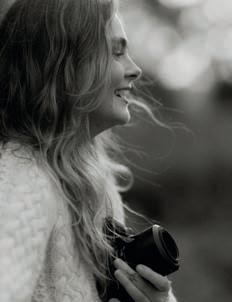
“Now , I’ve spent the past three years freelancing part-time and have recently taken the leap into full-time photography. I’m drawn to storytelling – constantly searching for beauty in moments, people,
“My work is deeply rooted in the natural environment, seeking out scenes that evoke a sense of peace. I look for where natural light falls best and sculpt the composition around it to tell the story I’m working on.
“I want my work to feel pensive, thoughtful, and calm. I try to express my romantic view of the world, often leaning toward a soft, feminine aesthetic. I try to poetically showcase crafts, people, and places, focusing on their beauty as that’s what I love to share most.




Soak up spring

Book your Spa Day at St Michaels Resort

























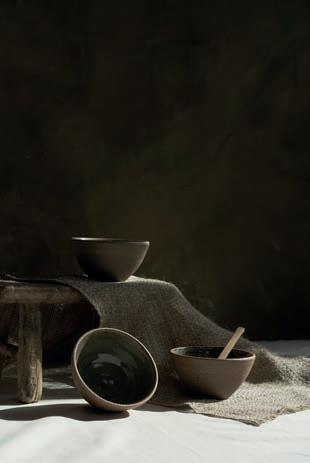


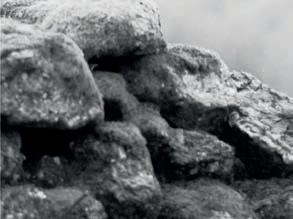
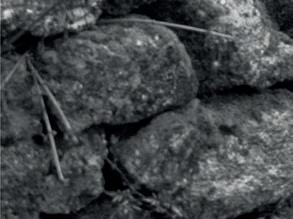









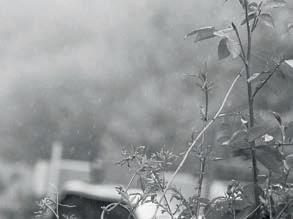



“I grew up closer to London, surrounded by towns and suburbs with little access to wild nature. Moving to Devon as a teenager, I was captivated by the moors and woodlands, falling in love with their constant, naturally occurring earthy tones. That sense of awe has never left me, and I think it carries into my work. I’m always drawn to stories of people connected to the land and environmentally conscious processes.
“Utilising natural light and shaping my scene around it is one of my favourite ways to work. For indoor detail shots, I sometimes introduce a single external light to sculpt a hand or object, creating moody contrasts with light and shadow. Fine-tuning details in dark environments is something I want to do more within my shoots, where subtle shifts in light can make all the difference.
“My work includes craftspeople, landscapes, portraits, branding and weddings, but I approach everything the same way. Image-making is an instinctual process for me, and while I find it difficult to change, the benefit is that my style remains cohesive. Over time, my instincts evolve, adapt and improve, shaping a continuous creative process.
“One of my favourite images was taken while traveling with my Norwegian family to a hill overlooking the land where my ancestors once ran a smallholding. Most of the time, I take photos for others, but every
so often, there’s one just for me – and those are always my favourites.
“Photographic artistry isn’t down to the tool in your hand, I have seen amazing phone images that are greater than lots taken by the camera, the choice of tool is yours. The artistry comes down to perspective and intention. Be true to how you see the world and work to reflect that through your process. We are all drawn to noticing different aspects of what’s around us, and sticking to your unique viewpoint, I think, makes great artistry. I also think the intention behind your work is important, to have purpose behind your image making, to not flood the world with too much visual noise without meaning.
“Over the next year, I plan to pour more energy into photography, continuing to focus on people, craft and connections to the land. I’m also excited to experiment with moving images and analogue photography – not just for creative growth but out of curiosity and the pure joy of learning.
“As someone who works a lot in storytelling through multiple images, I find the selection of stand-alone photos difficult. They all fit together like cogs in a machine to tell different details of the same tale. I think I am yet to take the one image I would show to represent my work, perhaps it will be discovered in my endeavours over the next year.”
laurenwiig.com

































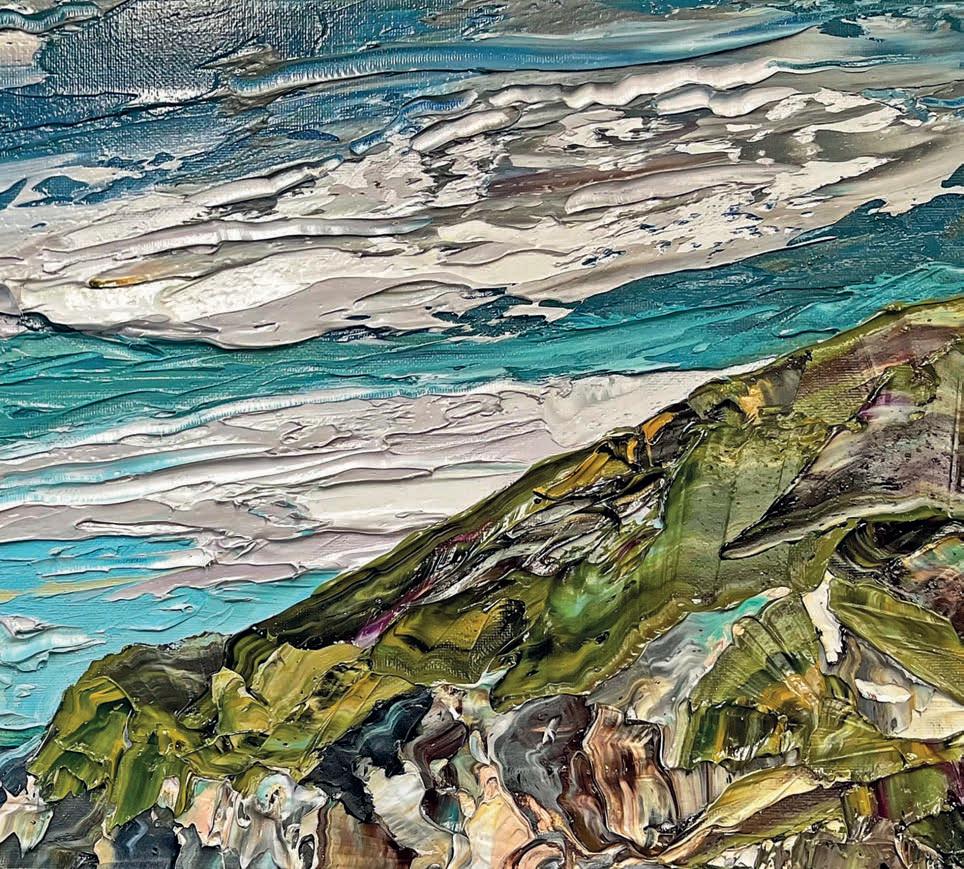



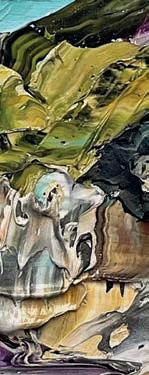















WORDS BY MERCEDES SMITH

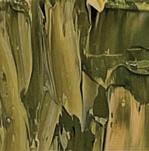







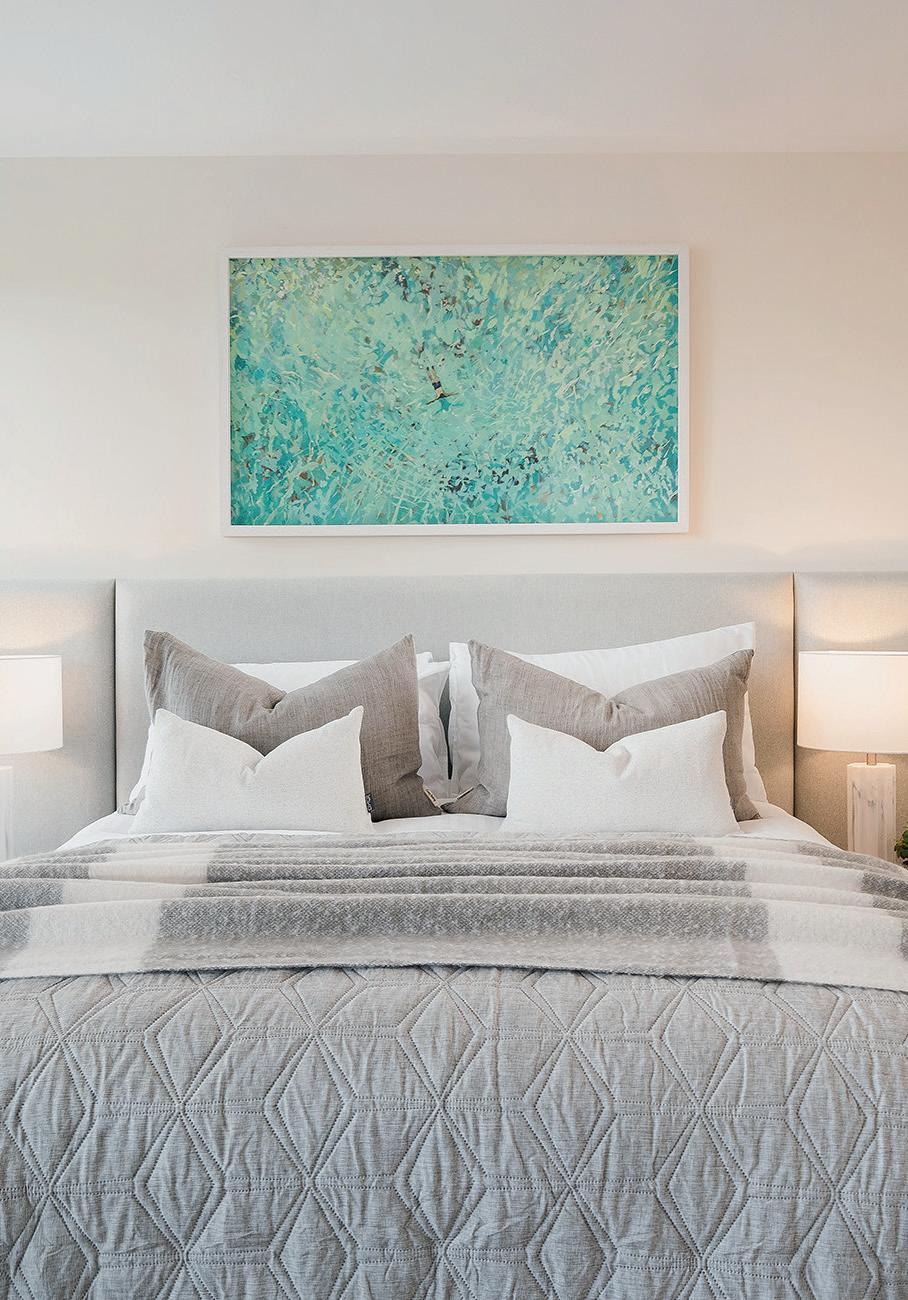

Rising talent Max Leuchars is bringing the historic traditions of impasto and s r to to new d en e
Sometimes an artist comes onto the scene with something new to say, with a new idea, a new approach or, in Max Leuchars’ case, a historic approach renewed. Max is young and largely self-taught, and as such carries none of the allegiances to modes or rules of practice that other young painters might start out with. This is a good thing. The phrase ‘self-taught’ has become as respected in Fine Art as graduation from any top flight art school, provided the artist has talent, focus and creative intent.

When I was first invited to see Max’s work, I experienced a few seconds of surprised disorientation. The warm palette and deep impasto surface of his work was so
‘old school’ that I had trouble, just for a moment, relating it to young talent and the strong collector interest I’d heard about. But then I got it. Max is a painter’s painter, an artist with a visceral and unapologetic relationship with paint. It makes face to face engagement with his work pretty thrilling. From Van Gogh to Lucian Freud, the inherent energy of impasto techniques have put power into artworks that would have been less vital, less emotionally provoking without them.
My guess right then, was that Max had been raised around historical works of art. “My parents are antique dealers,” he confirms, “so I grew up learning how to spot beautiful objects amongst things that may


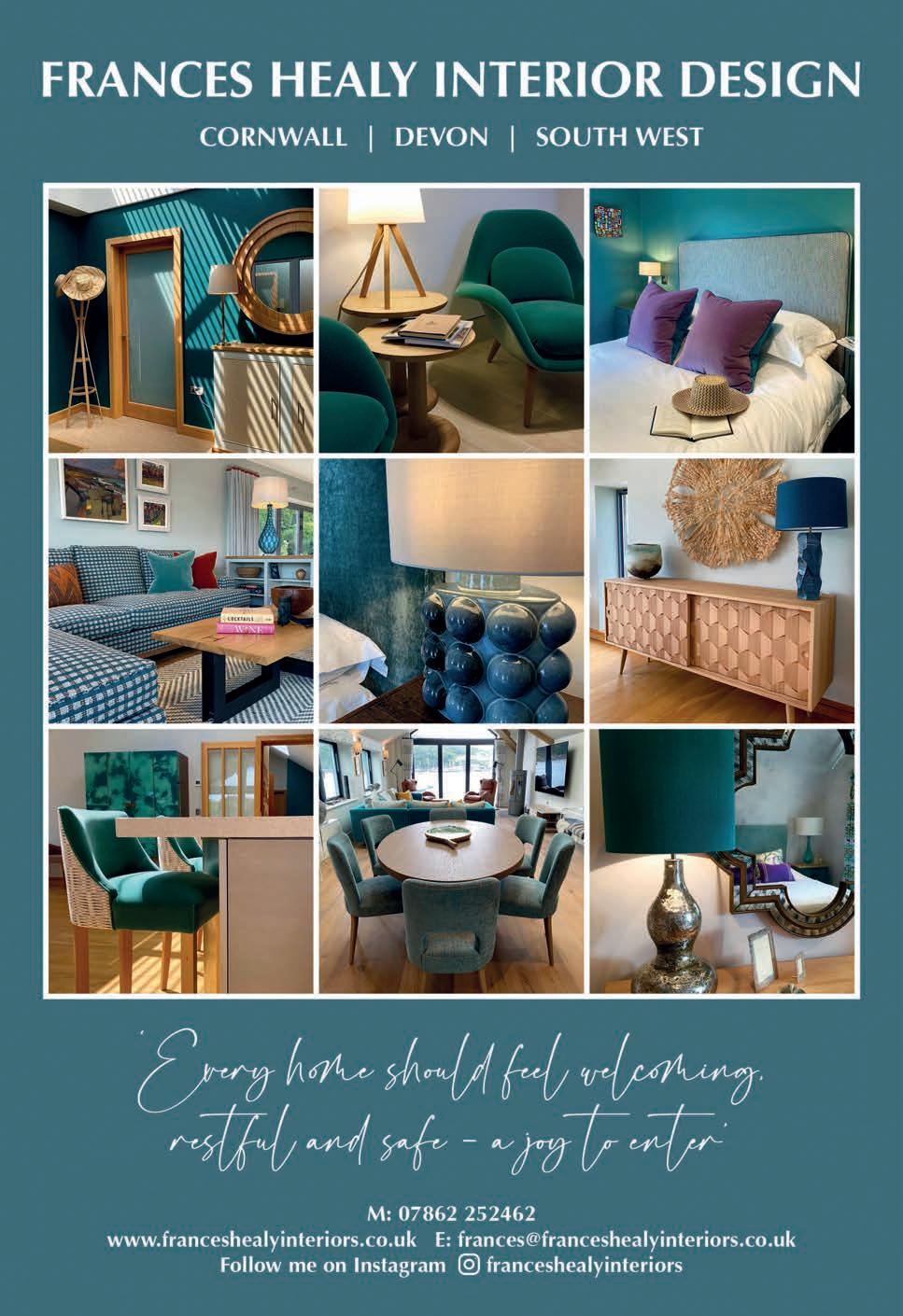

that may not look particularly special or important. I would join in on trips to flea and antique markets, and we would drive home with a car load of vintage furniture and French Impressionist style oil paintings.” Max was born in Winchester and studied at Bryanston school, whose alumni include artists Lucian Freud, Sir Howard Hodgkin and designer Sir Terence Conran. The art education he received there was among the best in the country thanks to the school’s exceptional studio facilities, tutors and visiting speakers.
I don’t think I would be painting today if I hadn’t been exposed to the work of certain artists there,” he says, “especially 20th century Italian painter and sculptor Giacometti, from whom I’ve gained a lot of inspiration. A er Bryanston, Max decided not to pursue further education, and he did not attend art school. I already knew I wanted to be an artist, so I began to paint straight out of school alongside paying jobs like bar work and landscaping, he says, of a strategy that countless young artists must take. Now, aged 26, he has been painting full time for two years and is represented
ABOVE Whippet Asleep
by several leading UK art galleries “which is an absolute dream,” says Max, “I feel very lucky. It’s never luck in the arts though.
Contrary to the idyllic myth of life as an artist, breaking into the art scene is mostly down to hard work and unwavering determination. “I always loved painting and drawing so becoming an artist was never in doubt,” Max tells me. “Although the art world can be challenging, I think it’s important to not play to the market or succumb to doing what you think is expected of you. I never want to lose the reason I started painting in the first place. I work hard in my studio, and I seem to be getting by month to month, and you can’t put a price on the freedom of enjoying your working life.
The physical act of painting seems to be what Max loves most, and the things that inspire him are many and varied. “Lots of different places inspire my landscape works, he says. I love painting in Cornwall, especially seascapes, and the rolling hills around Winchester, where I grew up, have a nostalgic draw for me, so I o en go back to paint them. I also travel a great deal for inspiration, and I’ve recently enjoyed painting in Morocco, which has involved a whole new palette. I constantly need new places to inspire me, or the act of painting can begin to feel like a process. That’s also why I’ve started to paint interior scenes. The fluidity and movement which I try to create in my land & seascapes seem to translate beautifully into urban subjects
like bustling bar scenes. Interiors are becoming more important to me now that I have a studio in London and have spent the past few years experiencing city life. I think it makes sense as an artist to reflect your daily environment in your work – it feels like a natural progression for me, and exploring new subjects helps you evolve as a painter – you can experiment with new angles and techniques and learn things which then feed back into your original subjects.”
In his studio Max always begins with a drawing from life or from his own photographs, but the scenes he paints can be partly invented. His colour choices, though, are more instinctive, and the way he applies paint, by way of emphatic palette knife work, comes directly from the traditions of impasto oil work and sgra to mark making. I work with very thick oils, which allows paint to mix on the canvas,” says Max. “I choose contrasting colours and then put them onto one palette knife, all together, and work them across and into the surface of the canvas.” In this way, colours mix incidentally together as the palette knife is drawn across the work, resulting in subtle adjustments of tone which capture the textures, form or topography of his subject. I never know exactly how things will turn out, and that is what makes this way of painting so exciting, he says. “In a sense, this technique means that the artwork really does paint itself, I don’t need to be precious about it. It also suits my love of gestural painting on large scale canvases because it is such a free and


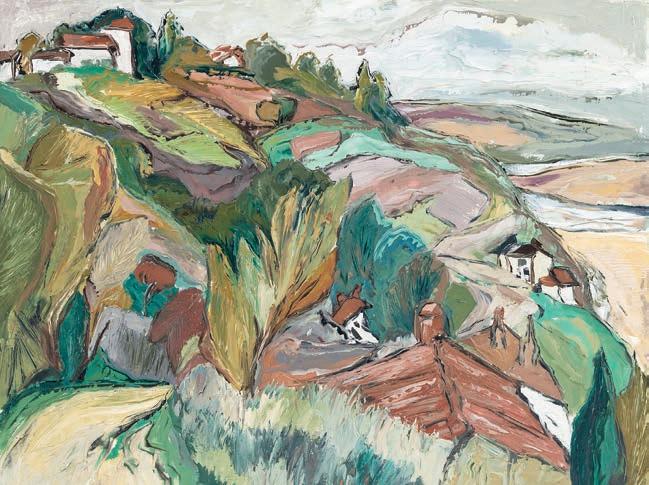

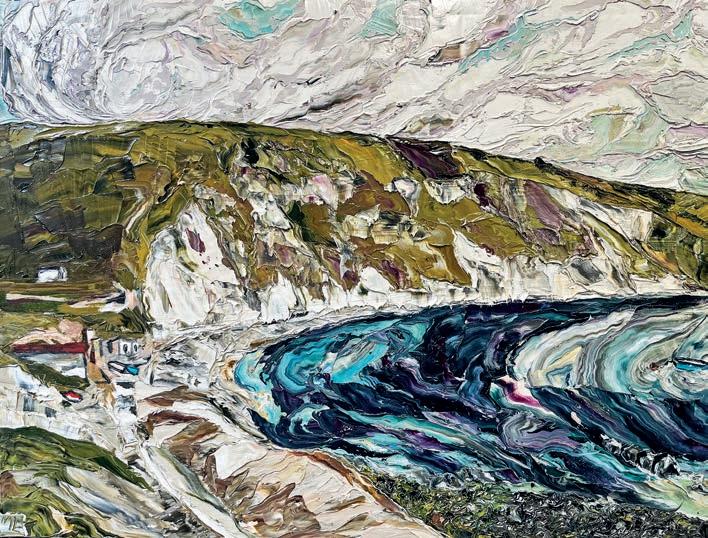
energetic way to work, and then when you stand back from the surface you see it has all come together.”
This April, Max is exhibiting his most recent collection at Polzeath’s Whitewater Contemporary. It includes a series of dramatic seascapes inspired by the North Cornwall coast, alongside a collection of rural landscapes and city scenes from his European travels. The show, his third for Whitewater, draws an interesting line of progression for an artist who has exhibited both at the LAPADA event in Berkely
Square London, which brings together the worlds of fine art and antiques, and at leading contemporary art galleries, all within just a few years. “I’m not sure where my work sits in the wider art scene, says Max, but I don’t really think about it. I’m exactly where I want to be.”
See Max Leuchars’ Solo Exhibition from th April to th May at Whitewater Contemporary, The Parade, Polzeath, PL27 S , and at www wwcg co uk maxleuchars com

In conversation with floral artist, grower, educator and author, Bex Partridge
Can you tell me a little about your background and how you found your way into the world of flowers?
I started my business about eight years ago, but I’ve only been running it as a full-time business for the last three. Before that, I had a very multifaceted career to say the least. I left school at 16, trained to be a chef, and worked in the wedding and dinner party industry before moving into wedding planning. I then stumbled into the corporate world, working in marketing and product development for FMCG companies. While it seems a world away from flowers, I actually worked on a lot of fragrance development, so there is a tenuous link to what I do now!
© Laura Edwards

My job took me to live in Amsterdam for a couple of years and the way the Dutch decorate their homes with flowers, o en with big beautiful seasonal branches, was hugely inspiring to me and very different to what we were doing in the UK. The British flower movement hadn’t really taken hold, so flowers at home tended to be quite formal. That experience really sparked something in me.
It’s really important to say that I have always gardened, either with my mum or learning from my grandma. My husband and I bought our first house when we were 23 and had an allotment by the time we were 25 which, back then, wasn’t considered to be cool. I was always the one that was gardening at the weekend while my friends were out clubbing.






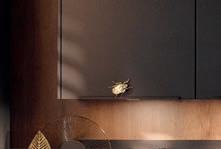










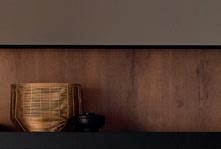






















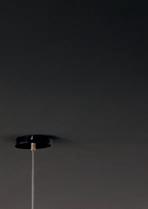








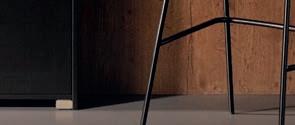






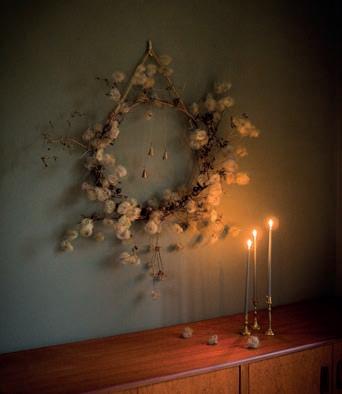


I went back to work six months a er having my first child. When you have a child, you really start to re-evaluate what you’re doing and what you enjoy. By the time my second son was born a couple of years later, we had moved back to the and this is when things really started to change for me from a career perspective.
More and more I realised I just didn’t want to spend my days in an o ce doing things I didn’t enjoy with people who weren’t my vibe. It sounds awful, but that was the reality. Around that time, we had moved to a new house that had the most amazing mature garden. My son was born in March and, while I was on maternity leave, the garden came to life and I honestly became completely obsessed with nature.
I felt like I was trying to find a little piece of myself, that wasn’t work and family, and so flowers became that piece. Gardening has always been a thread throughout my life and that is fundamentally why I do what I do now. This business gives me an excuse to continue to grow and garden but then to also create beautiful, lasting designs from what I grow.
How did you make the adjustment from the corporate to the creative world?
I think flowers ignited a creativity in me which had actually always been there, but that had been suppressed by my career. I’ve always been that person starting
a new hobby or trying something out, whether it be knitting or cross stitching I never just sit still. I always need to be doing something with my hands. Then, when I discovered flowers, and particularly dried flowers, I found something I could not only create with, but also grow.
Dried flowers back then were not considered to be in vogue and nobody in my sphere was even remotely interested in what I was doing – most thought I was absolutely crackers I went to a couple of markets and sold nothing. ndeterred, I launched Botanical Tales on social media, which had a wider audience, and I suddenly found a lot of people out there who actually loved what I did and it snowballed from there.
Did you have any formal training?
No, I’m entirely self-taught. I love my garden. I love growing. I love nothing more than receiving fresh flowers, but from a creative perspective, I really enjoy the freedom that dried flowers can give you, without the worry that they’re going to wilt or how long they will last. It means you can really take your time. It becomes almost a meditative practice, because there’s not the time pressure you have if you’re working with fresh flowers.
So, I spent my days when I wasn’t with my baby son, either playing with dried flowers, photographing them or writing about

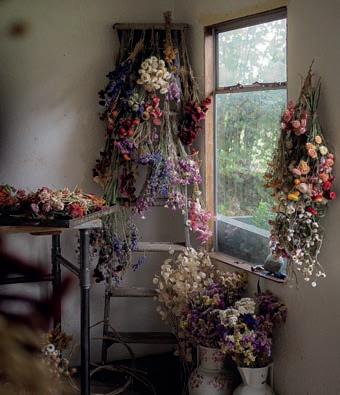

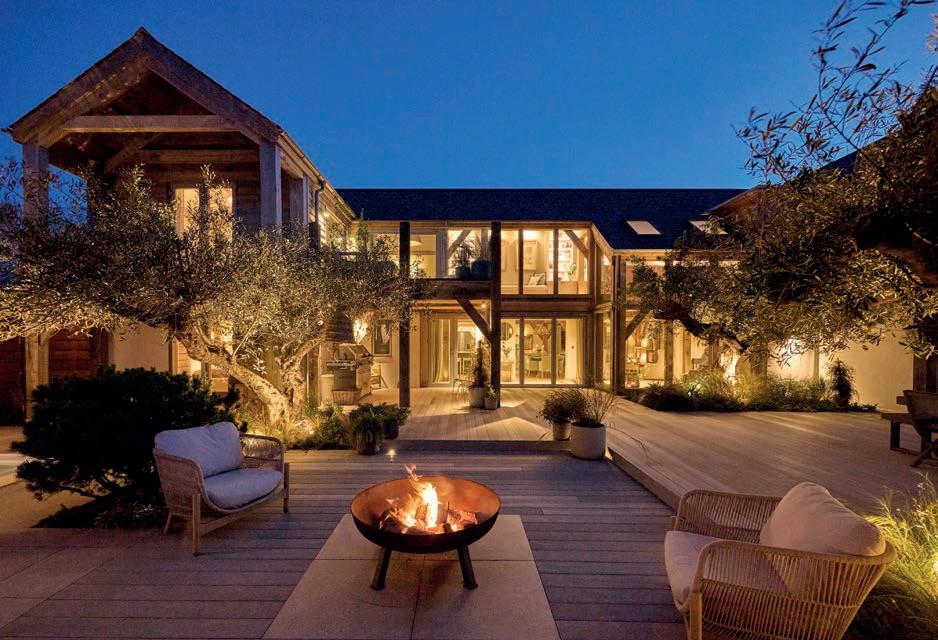

them, and from there, I got requests for arrangements. Workshops followed and I pitched my first book. Botanical Tales is ever-evolving.
We now live in Devon with about a half an acre of land. Some is given over to my son’s football pitch, but I do have a small dedicated growing area with lots of beds dotted around. I’ve then got two allotments in a little village just down the road that has got much better growing conditions than at home. When we first moved to Devon, I thought I was going to grow everything that I could possibly need, but realised that in itself is a full time job.
While growing is such a huge part of what I do (as well as foraging, which helps me to gather the stems that I need to give my pieces a really lovely organic feel) I have made peace with the fact that I can only grow so much. This has taken the pressure off and allowed me to continue to grow, but with enjoyment.
them myself as it gives me control over the drying conditions. The very act of drying is actually quite an art in itself. I dry stems in my studio away from direct sunlight to keep as much colour as possible. The studio is a passive build, maintaining heat in winter but staying cool in the summer, giving the perfect ambient, non-fluctuating temperature that dried flowers require.

If you are picking to enjoy freshly cut flowers, then you would normally pick at either the bud or just a er the bud stage. With dried flowers, you want to pick most when they are in full bloom, but with others you’ll be utilising the seed head, meaning you can actually enjoy the flowers, let the bees and butterflies enjoy them too, and then wait for the seed heads to go over. This is another reason why I love growing dried flowers, to see your garden full of blooming flowers and being able to enjoy them before cutting them is the very best.
Can you tell me a little about the drying process and do you dry the flowers yourself?
For the most part, yes. I much prefer to start with fresh flowers and then dry
Bex Partridge is the author of Cra ing With Flowers (Quadrille, £16.99), an extract from which can be found on the following pages botanicaltales com
WORDS BY BEX PARTRIDGE
When skies are leaden and the ground is thick with mud, indoor gardens are the perfect way to brighten darker days. These small pots of joy are so simple to create and require just a small amount of forethought at the end of the year to fill our homes with fresh flowers in the early part of the next year. They are a pop of colour set against a gloomy backdrop, and in some cases –such as with hyacinths – provide the most incredible aroma, enough to li anyone out of a slump. I couldn’t be without them, and I nestle these pots purposefully around the house to be noticed as I go about my day. Favourite spots include by the bed, particularly for those that have a scent, on the kitchen table and at my desk.
This method of growing flower bulbs is called forcing, where we are creating a safe and welcoming environment for the bulbs to allow them to quickly sprout and bloom (o en in as little as 6–8 weeks). Bulbs are quite miraculous in that everything they need to flourish is already stored within

Extracted from Cra ing With Flowers by Bex Partridge (Quadrille, £16.99), published March 2025.
the bulb, and this means we can be clever about how we force them. While many of us will be aware of forcing paperwhites (a snowy narcissus) and amaryllis by simply resting the bottom part of the bulb in a shallow bowl of water, any spring bulb can be helped along using this method.
I tend to favour small and delicate blooms over the blousy, shouty ones. Smaller blooms such as crocus can get lost outside unless planted en masse, and so to have them flowering indoors offers the opportunity to really stop and appreciate their intricate beauty. And snake’s head fritillaries win my heart every year, their heads gently nodding on divine twisting stems.
Nearly all the bulbs and plants listed can be transplanted to the garden once they have flowered and begun to fade. While they may not all be as vigorous or vibrant the next year, they will settle into their new environment and before long will naturalise.

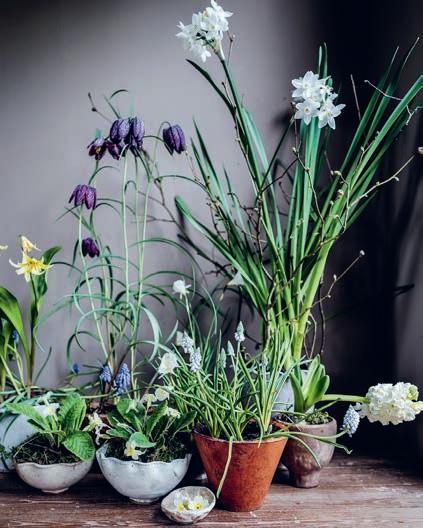
Grape hyacinths
Narcissi ( golden bells and spoirot )
Snake’s head fritillary (mice love the bulbs of snake s head, so if forcing in the greenhouse keep them covered)
Crocus (mice also love crocus bulbs )
Iris reticulata
Paperwhites (these can t be planted outside as they re not hardy)
Amaryllis (these can sometimes flower up to three times in one season, so wait patiently as the rst blooms go over)
Hyacinths
Snowdrops
Snowflakes
Bluebells
Note: Snowdrops, snowflakes and bluebells can also be forced but do much better when planted in the green (when shoots of green have appeared rather than dormant bulbs this goes for when planting out in the garden too). If I want to bring snowdrops inside then I will dig up a clump from the garden just as the green shoots appear, then replant as the flowers fade. Please never dig up snowdrops or bluebells, or indeed any plants from the wild – only take from your own spaces or where you have permission.

Mushroom trays (optional)
A selection of pretty pots I make my own and also source from thri stores and vintage stores. I adore the old terracotta pots I’ve used here.
Gravel
Compost mixed with loam Moss


1. I like to start my bulbs off in mushroom trays in the greenhouse before moving them over to pots just before they begin to flower this helps when growing many bulbs at one time. You can also plant directly into your preferred vessel.
2. Give some consideration to the bulb and vessel combination. For shorter bulbs you will want to select a smaller vessel such as a terracotta pot, and for something like a paperwhite (which can grow very tall) you’ll want to use a vessel with more depth and weight.
3. Begin by placing a small layer of gravel at the bottom of your vessel.
4. Fill the rest of the pot with your compost mix, leaving enough space at the top to nestle in your bulbs.
5. Position your bulbs with their roots touching the earth. The bulbs can be placed quite close together, and you can choose to create a mix of flowers or fill each vessel with the same type. se your imagination and tap into your creative vision.

6. Nestle a small amount of soil in and around the bulbs, but don’t entirely cover them.
7. Cover with a layer of gravel or moss, depending on your preference, as this helps the bulbs stay moist and not dry out.
8. eep the bulbs inside away from the elements to encourage them to grow. The warmer the temperatures, the faster the bulbs will grow and flower. If you have lots of pots, you can stagger where you keep your bulbs so that you have a continuous supply of beautiful blooms through winter and into spring.
9. Some flowers will need supporting as they can grow very tall and top heavy. Paperwhites are the main ones that will need some assistance. You can create support structures using hazel (whose catkins are particularly lovely) and birch twigs, which both complement the flowers.
botanicaltales com



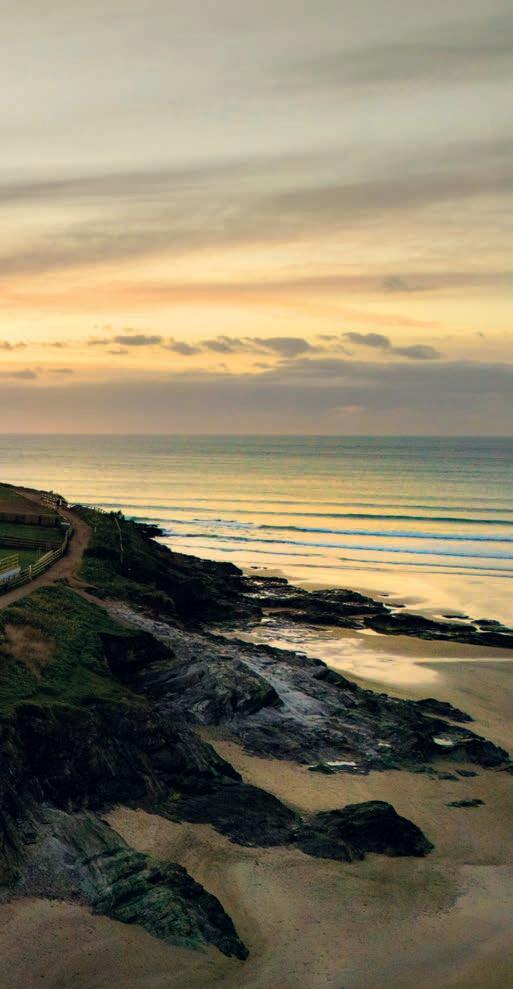

Three coastal homes, endless potential – an extraordinary slice of Polzeath’s shoreline.
Arare opportunity to shape the Cornish coast, this remarkable site on Tristram Cliff offers uninterrupted sea views and direct access to Polzeath’s golden sands. The existing dwelling, igi, is a classic s bungalow with three bedrooms and sweeping views from its elevated position. Beachside, set further back, is an uninhabited cottage with planning permission in place for two contemporary residences.
With just under an acre of land, metres of Southwest Coast Path frontage and a coveted position overlooking one of the country’s most sought-after surf spots, this is a chance to create a landmark coastal retreat. The potential for transformation is immense, whether retaining igi’s charm or realising the site’s full architectural possibilities. Moments from ock and Daymer Bay, and with world-class golf, sailing and dining on the doorstep, this is an extraordinary offering in an unrivalled location.

Acharacterful former gamekeeper’s cottage, Pendrea Cottage is a home of quiet charm and modern versatility. Thoughtfully restored, its period features remain intact while a sensitive renovation has introduced contemporary comfort. The heart of the home is a spacious kitchen-dining area, its central island inviting convivial gatherings. A gas fire adds warmth, while an adjoining sitting room offers a restful escape. Above, the master bedroom enjoys views towards Mount’s Bay, complemented by two further wellappointed bedrooms and a family bathroom.
The ground floor houses a self-contained annexe, successfully let on Airbnb but readily reabsorbed into the main dwelling. Outside, a broad terrace catches glimpses of St Michael’s Mount, while a garage, utility space and a music or games room enhance its appeal. With Penzance, Newlyn and Mousehole close at hand, Pendrea Cottage is both a tranquil retreat and a gateway to Cornwall’s captivating coastline.
PENDREA COTTAGE Guide price: £775,000
ROHRS & ROWE 01872 306360
info@rohrsandrowe.co.uk
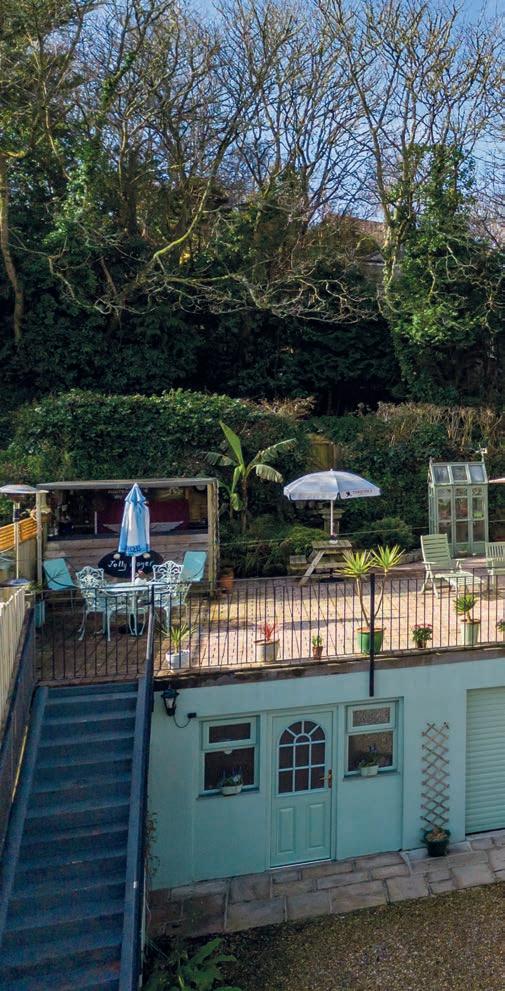
rohrsandrowe.co.uk




With standout design, this property is arguably unrivalled in this sought a er region
Astatement of refined modernity, Sandylands in Egloshayle is an architectural triumph, poised within the quietude of north Cornwall’s rolling countryside. Conceived and cra ed in 2023, its vast, contemporary silhouette unfolds across 6,600 square feet, a synthesis of space, light and luxurious intent. The entrance hall – grand yet inviting – draws the eye to an elegant staircase, while beyond, an open-plan kitchen and sunken living space exude sophistication. Five expansive bedrooms offer retreat-like comfort, the master suite distinguished by a private terrace, opulent en-suite, and dressing room.
A cinema room extends the invitation to unwind, leading to an expansive terrace with unbroken views. Beneath its sleek design lies hidden intrigue – a secret room, a sunken wine cellar and state-ofthe-art technology integrated for modern living. Outside, 0.66 acres of landscaped grounds cradle the residence, while within, an indulgent 12-metre heated pool completes this rarefied retreat. A striking balance of innovation and elegance, Sandylands is a home of distinction in the Cornish landscape.
SANDYLANDS Guide price: £2.5M
JACKIE STANLEY 01841 532555
sales@jackie-stanley.co.uk

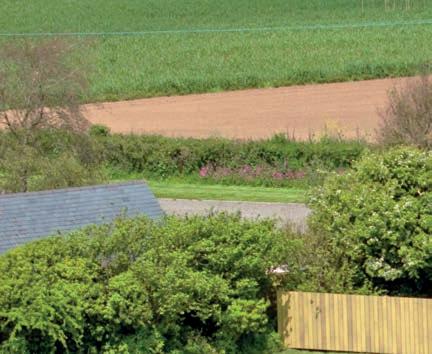

jackie-stanley.co.uk








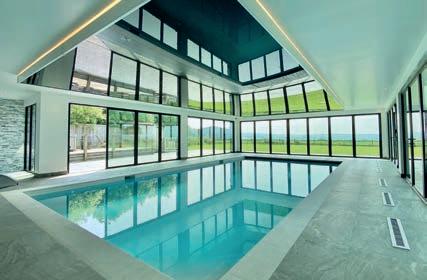
A striking coastal home designed for luxury, comfort, with captivating views.
Perched above the waters of Cawsand Bay, Bownder House is an extraordinary residence where contemporary design meets the pull and push of the sea. Spanning five floors and over 3,700 square feet, this is a home of rare scale and refinement. Each room is meticulously positioned to embrace panoramic views, with an open-plan kitchen and dining area flowing onto a private balcony. A wood-burning stove anchors the sitting room, while the principal suite, with its en-suite and secluded terrace, offers a private retreat.
Beyond the living spaces, the leisure suite is a showpiece of indulgence – an indoor pool, spa, sauna and steam room form a sanctuary of relaxation. Outside, landscaped gardens frame terraces that overlook the bay, while two private parking areas ensure convenience in this sought-a er coastal enclave. Bownder House is a rare opportunity to embrace Cornish waterfront living at its most distinguished.
BOWNDER HOUSE Guide price: £1.95M
JACKSON-STOPS 01872 261160
cornwall@jackson-stops.co.uk

jackson-stops.co.uk




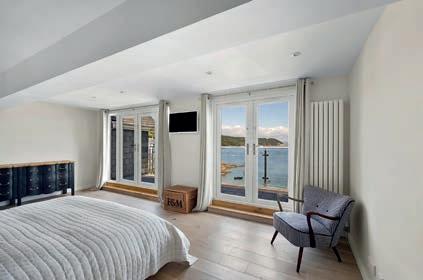

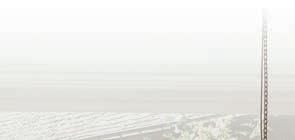

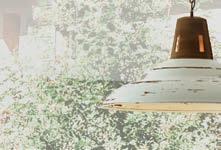









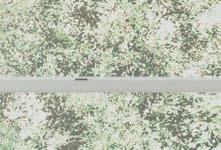


















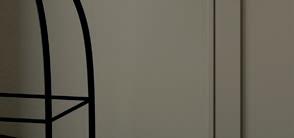














WORDS BY AMY SHEPPARD
Cornwall-based food writer Amy Sheppard’s everyday essential cookbook uses staple ingredients to give 100 new reasons to love cooking dinner.






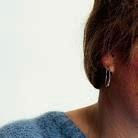




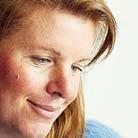







SERVES: 4
INGREDIENTS:
Oil, for frying
1 small butternut squash, peeled, deseeded and cut into 2–3cm (3 4–11 4in) cubes
1 red onion, finely sliced
1 tbsp garam masala
1 tsp chilli powder
1 tsp ground turmeric
1 tsp ground cumin
1 tsp ground coriander
METHOD
Heat a drizzle of oil in a large, lidded, non-stick saucepan. Add the butternut squash cubes and red onion and fry over a medium heat for 5 minutes, turning regularly.
Stir in the spices and the garlic and fry for 1 minute, stirring continuously.
Add the rinsed red lentils, coconut milk, tomatoes and vegetable stock. Season with salt and pepper, stir thoroughly and bring to the boil. Place the lid on the pan and simmer over a medium heat for 25 minutes. Take the lid off, give it another good stir and simmer for a further 5 minutes until the lentils and squash are tender. Stir in 90g (3oz) of hummus.
Divide between 4 bowls. Mix the remaining hummus with the milk and drizzle over the dahl. Finish with ground black pepper and fresh coriander, if you like.
2 garlic cloves, finely chopped
300g (101 2 oz) dried red lentils, rinsed
400g (14oz) can coconut milk
400g (14oz) can chopped tomatoes
700ml (24fl oz/3 cups) vegetable stock
180g (61 4 oz) red (bell) pepper hummus
2 tbsp milk
fresh coriander (cilantro) leaves (optional)
salt and freshly ground black pepper
Use ready-prepped butternut squash cubes for an even easier dinner.
You can omit the hummus to make this. It’s less creamy, but still lovely without.
Make extra and freeze into portions as this makes a really good lunch on busy autumn days when you need something warming.
If you’ve always wanted to try making dahl, this is an easy cheat’s version, a stripped-back recipe with butternut squash for texture and red pepper hummus for creaminess!
It’s a quick way to add incredible flavour and has a lovely thick consistency. Serve as is, or with rice if you want it to go further.


SERVES: 5
INGREDIENTS:
Oil, for frying
500g (1lb 2 oz) gnocchi
1 onion, finely chopped
200g (7 oz) garlic and herb so cheese
2 x 145g (5oz) cans tuna, drained
100g (31 2 oz) cheddar, grated
250ml (9fl oz) milk
METHOD
Heat a good drizzle of oil in a large, non-stick frying pan (skillet). When it’s spitting hot, add the gnocchi (work in two batches if need be) and fry for 3–5 minutes over a medium–high heat until golden brown and crisp. Set the gnocchi aside.
Heat a little more oil in the pan. Add the onion and fry for 5 minutes until so . Take the pan off the heat and add the so cheese, tuna, grated cheddar, milk, frozen sweetcorn, frozen peas and oregano. Season with salt and pepper and return to a medium heat.
Stir until all the ingredients are combined and the mixture is starting to gently bubble.
Once the cheese has melted, stir in the spinach and the fried gnocchi. Simmer for a minute or two until the frozen veg is so and the gnocchi is heated through.
Serve immediately with a side of garlic bread and salad.
80g (23 4 oz) frozen sweetcorn
80g (23 4 oz) frozen peas
1 tsp dried oregano
50g (13 4 oz) fresh spinach leaves garlic bread and salad, to serve salt and freshly ground black pepper
TIPS & SWAPS
You can cook the gnocchi in the air fryer for 6 minutes at 190oC/375oF, if you prefer, before adding it to the sauce.
If you want a crispy topping, sprinkle the finished dish with garlic crumb. ou can cook it in the same pan a er you’ve fried the gnocchi.
se reduced-fat so cheese in this for a less rich option.
I love fish pie and so do my family, but it’s such a faff to make and creates so much washing up! This is a really easy, cheap version that is on the table in under 15 minutes and uses canned tuna, shop-bought gnocchi and just one pan!
INGREDIENTS:
1 tbsp plain (all-purpose) flour
1 tsp piri piri seasoning
225g (8 oz) halloumi, cut into 1–2cm (1 2–3 4in) cubes
375g (13oz) dried rigatoni (or other pasta shape) oil, for frying
For the sauce:
1 large red (bell) pepper, deseeded and finely sliced
METHOD
Mix together the flour and piri piri seasoning in a bowl. Add the halloumi cubes and use your hands to ensure they are dry and coated on all sides.
Add the halloumi to a large, dry, non-stick frying pan (skillet) and fry for 3–5 minutes over a medium heat, turning occasionally, until golden brown and crisp all over.
At the same time, add the pasta to a large saucepan of boiling salted water and cook for about 10 minutes or until just tender. Reserve 150ml (5fl oz) of the starchy pasta water before draining.
Remove the halloumi and add a little oil to the pan. Add the red pepper and onion and fry for 5 minutes over a medium heat until so . Stir in the tomato pur e and the piri piri seasoning. Fry for 1 minute, stirring continuously, then stir in the so cheese.
Slowly add the reserved pasta cooking water to the sauce, a little at a time, stirring until combined and heated through before adding more. Stir in the spinach and halloumi and season with salt and pepper. Gently heat through. Finally, add the drained pasta and stir until all the ingredients are combined. Finish with a little more black pepper and serve with a salad.
1 onion, finely sliced
1 tbsp tomato pur e (paste)
1 tbsp piri piri seasoning
200g (7 oz) so cheese
80g (23 4 oz) fresh spinach leaves, roughly chopped salad, to serve
salt and freshly ground black pepper
I’ve used reduced-fat halloumi and so cheese in this before and I honestly couldn’t notice the difference.
You can swap the halloumi for diced chicken breast, if you like, but it may need a little longer to cook through depending on the size of your pieces, so make sure you double check.
You can use the spiced halloumi in a wrap with salad and mayo if you fancy a quick lunch.
I’m a bit addicted to piri piri seasoning – I find myself adding it to a lot of dinners at the moment. It’s got quite a kick to it, so be careful with your measurements! You can use any pasta you like in this, including spaghetti, but I really like it with rigatoni.


esign and quality of gemstones are everything when it comes to fine jewellery. The feeling of timeless elegance and femininity when you place a beautiful ring on your finger, or adorn your ears with a delicate set of earrings, is like no other. Discover the transformative power of jewels with this latest collection from Michael Spiers.

FOPE ESSENTIALS 18CT YELLOW & WHITE GOLD DIAMOND HOOP/ DROP EARRINGS – ,

MIKIMOTO M COLLECTION AKOYA CULTURED PEARL & DIAMOND RING IN 18CT YELLOW GOLD – ,

GUCCI LINK TO LOVE 18CT YELLOW GOLD STUDDED HOOP EARRINGS – ,



MICHAEL SPIERS 18CT YELLOW GOLD BRILLIANT & EMERALD-CUT DIAMOND HALF ETERNITY RING 0.90CT – ,

GUCCI ICON 18CT YELLOW GOLD GG THIN RING – ,

BY LUCY STUDLEY
Soaking up the past, present, and future at Cornwall’s new-look museum.
The concept of a ‘museum’ has changed more in the last 20 years than the previous 200. Gone is the notion of a fusty old institution, the preserve of academics and bespeckled hoarders. These days museums are home to cuttingedge technology, creative workshops, community groups and families seeking an enriching yet fun-filled day out.
For Cornwall Museum and Art Gallery, the modernisation process is an epic undertaking on the scale of an expedition by Truro-born explorer Richard Lander, whose medicine chest is one of its most prized artefacts. Previously known as Royal Cornwall Museum, the institution almost didn’t survive a funding and

infrastructure crisis a few years ago. Now, thanks to a dynamic new Co-Directorship and grants from funds including Truro Town Deal and the UK Shared Prosperity Fund, the historic city centre landmark is firmly on course to become one of the country’s most unique and exciting regional museums.
The transformation began with the redesign of the museum’s Mineral Gallery. Home to a globally significant array of minerals, including 3,000 specimens donated by Philip Rashleigh in 1903, the collection is a kaleidoscope of the earth’s geological processes. Reopened to collective gasps last summer, the bold reimagining of this gallery set the tone for what was to come.


















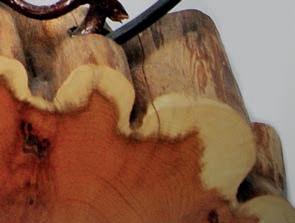









Entering the darkened space – adorned with a unique paint created by London Pigments and incorporating Cornish minerals – is like going underground. Here, spellbound visitors can discover the jewel-like colours and forms nurtured in the earth’s bedrock for millennia; azurites, cuprite, cassiterite, blister copper, quartz, and the world’s largest known crystal of liroconite. The display presents a rich seam of incredible specimens which have shaped the landscape and history of the region and the identity of its people.
And, if a bunch of rocks doesn’t seem that relevant to modern life, think again. From agriculture to construction, health to finance, minerals underpin our modern world. Today, Cornwall is emerging once again as an important player in mineral extraction with the Lithium industry, an essential component in phones and other electronic devices. Whenever you’re swiping, typing, watching or playing via a device, minerals – including Cornish ones – are at work. The ‘digital lab’ in the new space is an apt use of this interactive, immersive technology, bringing the story of the minerals bang up to date.

For the museum’s Executive Director, Jonathan Morton, the transformation of the Mineral Gallery was something of a rite of passage. “People are rightly very attached to the museum and the collections we hold. The Royal Institution of Cornwall, the charity which founded the museum, is a er all over 200 years old, says Jonathan, who joined the museum in 2020 alongside Co-Director Bryony Robins. “Therefore, there was an understanding that we needed to modernise to bring in new audiences and secure the museum’s future, but also a responsibility to that long legacy. In the transformation of the Mineral Gallery, we were able to show that looking at things afresh can make them come alive again, helping people reconnect with the past and find new ways into big concepts, like how geology shapes our lives today.
A similar thirst for fresh ways into big topics has shaped the design of the new Nature Gallery. This part of the museum reopened this spring as part of a major phase of the transformation which also included the introduction of a new Art Gallery, and the creation of the Heart
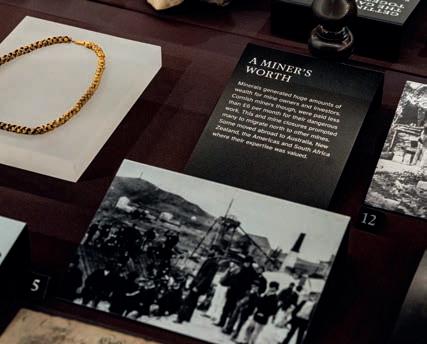

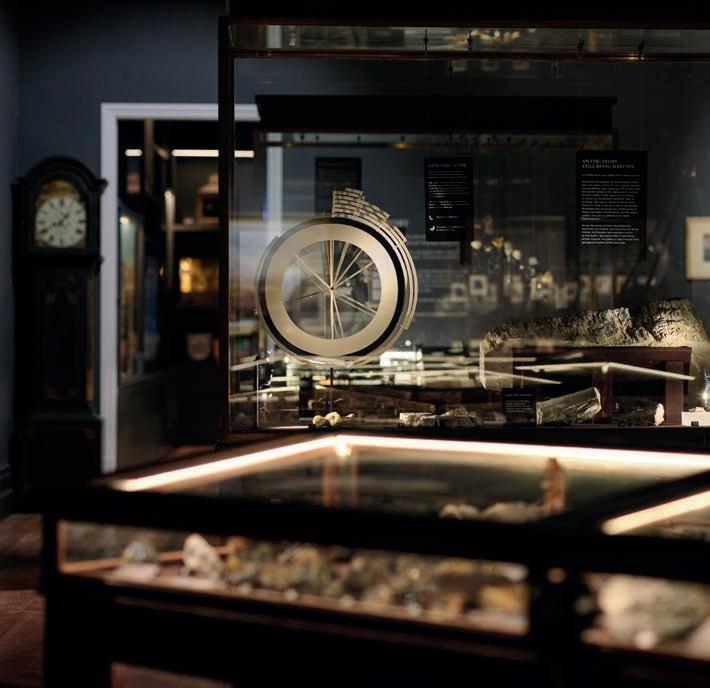


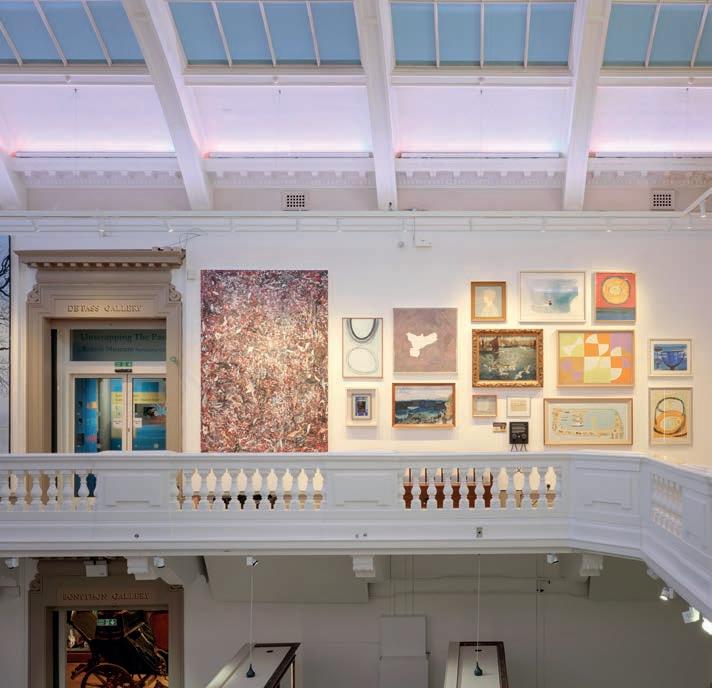
of Cornwall Gallery. “In the new Nature Gallery, we set out to create a space which is both playful and thought-provoking, explains Lauren Campbell, Engagement Manager within the museum’s dedicated and aspirational team. Working closely with specialist designers Wignall and Moore, and in collaboration with Cornwall Wildlife Trust, the ‘rewilded’ Nature Gallery celebrates Cornwall’s stunning landscapes, flora and fauna, and the historical conservationists, botanists, and citizen scientists who have helped us appreciate and understand them.
“This has always been a popular space with families, so we’ve incorporated sensory experiences, activities and play as ways into the overarching themes of sustainability and biodiversity enthuses Lauren. However, the new space also confronts the challenges of climate change and habitat loss unflinchingly, but with hope for the future. As Lauren says, “we tell the success stories of conservation and recovery, showing how we can learn from the past as we strive for a brighter, more considerate future.
Storytelling across space and time has also been central in reshaping the museum’s central gallery. Now known as the Heart of Cornwall Gallery, this is the ‘castle keep’ or seed bank of Cornish identity. Here, many of the museum’s iconic objects can
be seen, from ancient standing stones to stunning 4,000-year-old gold lunulae, wrecker’s lamps to sections of the first transatlantic cable.
Collections Manager Jeni Woolcock explains the approach. “Here, we explore how the Cornish identity manifests itself through the arts, sciences, and industry, as well as less tangible facets of ‘Cornishness’ like the region’s rich storytelling traditions, profound relationship with the landscape, and rebellious spirit.
The space may explore the unique identity of this small corner of the world, but the approach is far from insular. As Jeni puts it, “we uncover why visitors have long found a deep connection with a place where the land meets the sea, and why members of the Cornish diaspora all over the world still identify strongly with the land and culture of their ancestors.
Meanwhile, the towering walls of the museum’s balcony have been put to the best possible use with a ‘salon hang’ of the institution’s impressive art collection. A floor-to-ceiling feast for the eyes, visitors are now able to soak up works from the German, Italian and Dutch renaissances, English history and landscape paintings, the Pre-Raphaelite and Newlyn schools, and St Ives modernism.








As Artistic Director, Bryony Robins, explains: “The art collection was begun over 200 years ago for philanthropic purposes. At the time, education was a privilege rather than a right and, with the prohibitive cost and time of travel, people who lived in Cornwall rarely got to see paintings and sculptures from the European canon of art history.”
For example, Study of Three Girls’ Heads by Lucas Cranach the elder dates from c.1525 and is thought to be a triple portrait of Cranach’s three daughters. The collection also includes works by Constable, Hogarth, Terence Tenison Cuneo, Peter Lanyon, Bryan Pearce, Henry Scott Tuke, Stanhope Forbes, Christopher Wood and John Opie. There are also works thought to be from the studios or circles of Claude Lorrain, Willem van de Velde II, Giorgio Vasari, Jan Brueghel the elder, and Masaccio.
life found there. From train tracks to ancient woodland, peat bogs to urban streams, ecological processes come under the scrutiny of his painterly eye.
Another exhibition, Withy Lore, explores the cra and heritage of withy pot making – traditional lobster pots which were used on the Cornish coast for centuries.

St Petrocs Portraits is a group exhibition of portraits in tribute to the clients and staff of the Cornish homelessness charity, while Original Rebels by Camilla Dixon and collaborators explores the environmental activism of Barbara Hepworth and Patrick Heron.
Alongside this impressive display of the permanent collection, this spring sees Kurt Jackson’s Biodiversity exhibition on display, in which the celebrated British landscape artist opens windows onto different locations across the and explores the spectrum of plant and animal
“At the halfway point of the museum’s top-to-toe transformation, with a further phase to follow in a year or two, the museum itself is really beginning to reflect our whole outlook as an organisation,” enthuses Bryony. “Bold, creative, and ambitious, we’re using our collections to look back in order to make sense of our lives today and improve our future. I o en imagine what the museum will be like in another 200 years – it’s an intriguing thought!”
cornwallmuseum.org




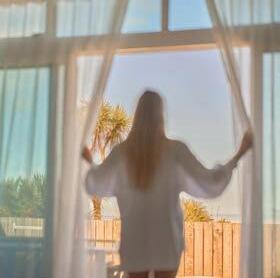





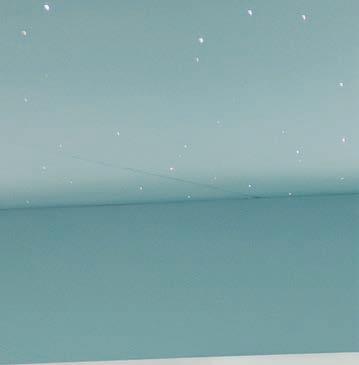
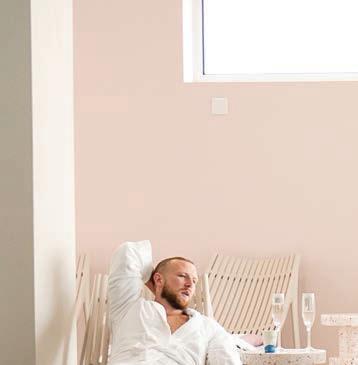

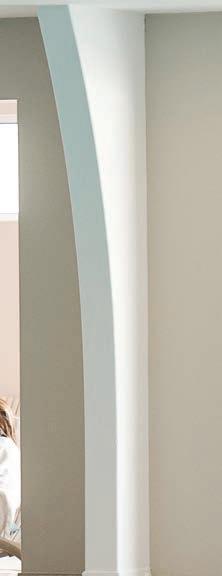









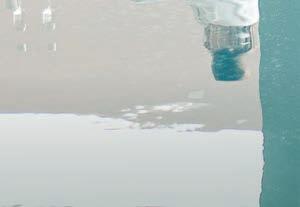


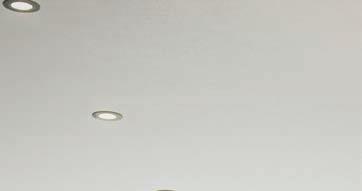











WORDS BY JAMIE CROCKER
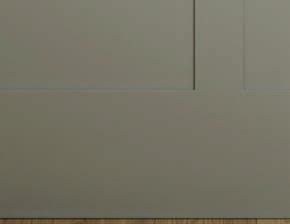




Design is not just what it looks like and feels like. Design is how it works.*
Situated in Cornwall’s only city, Kitchen Kit has long been a cornerstone for those looking to transform their culinary spaces with function and beauty. Known for precision and attention to detail, this esteemed establishment has recently expanded with a new showroom in Exeter – bringing exceptional kitchen designs to a broader audience.
This expansion reflects Kitchen Kit’s dedication to offering kitchens that cater to diverse tastes and lifestyles. Among their distinguished collections are Masterclass Kitchens, alongside the stalwart of Nobilia and Ballerina. Each brand brings its distinctive character, ensuring clients find a kitchen that aligns with their vision.

Masterclass Kitchens is synonymous with British craftsmanship and innovative design, blending classic aesthetics with modern functionality. Their Signature Collection features storage solutions that maximise space without compromising on style, ensuring efficiency and elegance.
For those drawn to enduring design, Masterclass offers shaker cabinets that exude British charm. Features like the Hathaway pantry provide stylish yet practical storage, while the Lansbury corner pantry makes the most of tricky spaces with accessible, aesthetically pleasing solutions.
Masterclass also excels in contemporary kitchens, with a handle-less collection


defined by sleek lines and minimalist appeal. Innovations such as the Magnaspace pull-out larder – a robust alternative to traditional wirework systems – and the expansive Linea and Lineaplus drawers highlight their commitment to form and function.
From Germany, Nobilia Kitchens introduces European sophistication, renowned for precision engineering and meticulous craftsmanship. Their modern designs often feature handle-less fronts for a seamless, contemporary look, complemented by high-quality materials that ensure longevity. Innovative storage solutions meet the practical needs of everyday life, while integrated lighting and ergonomic layouts enhance usability.
For those who favour a more traditional aesthetic, Nobilia offers classic designs
that blend enduring style with modern conveniences. Customisable cabinet interiors and intelligent storage solutions reflect the brand’s philosophy a kitchen should be as functional as it is beautiful.
Ballerina Kitchens, another esteemed German brand, is celebrated for its bespoke approach. Each kitchen is designed with individuality in mind, offering a variety of finishes, colours, and materials to suit personal taste. Their commitment to innovation is evident in cutting-edge technology such as anti-fingerprint surfaces and smart appliance integration.
Storage is a focal point in Ballerina kitchens, with pull-out pantries and concealed drawers enhancing space and organisation. This attention to detail ensures a clutterfree, efficient environment tailored to the needs of modern living.










Five Star Award-Winning Holiday Park
Luxury Eco Lodges | Cottages | Holiday Homes | Touring & Camping




Located in the rolling Cornish countryside above the beautiful seaside town of Bude in North Cornwall, Wooda is a family-run holiday park offering a varie ty of luxury self-catering accommodation and touring & camping pitches.
With beautiful sea views, five-star facilities and a range of on-site features including Restaurant & Bar, Coffee Lounge, Cocktail Bar, Takeaway, Nature Trail, Woodland Walks, Farm Animals, Tennis Court, Badminton Court, Gym, Pitch ‘n’ Putt, Secure Dog Field and Playground to name a few, it has something for everyone to create holiday memories that will last a lifetime!
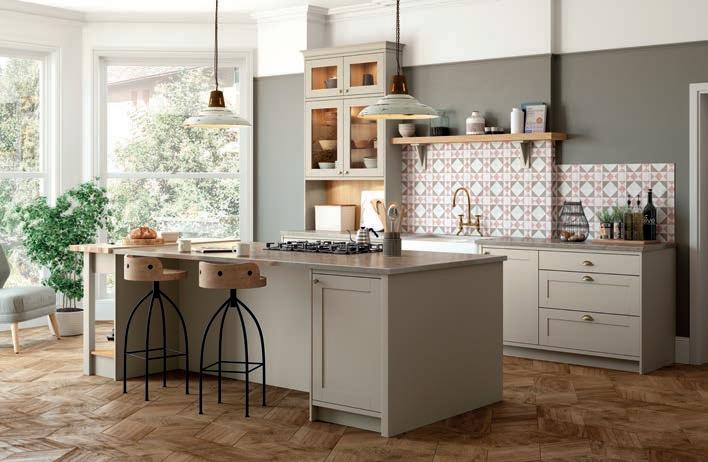
At Kitchen Kit’s new Exeter showroom, clients can explore a curated selection of classic and contemporary designs.
Classic kitchens are defined by their long lasting appeal, featuring shaker-style cabinets, ornate mouldings, and traditional fixtures. Natural materials like wood and stone enhance authenticity, ensuring enduring style. Modern conveniences such as integrated appliances, softclose drawers, and concealed storage complement the traditional aesthetic.
Modern kitchens, by contrast, embrace simplicity and functionality, often characterised by clean lines, minimalism, and a monochromatic palette. Materials like stainless steel, glass and high-gloss finishes create a polished look, while openplan layouts encourage social interaction. Islands and breakfast bars provide
additional workspace and casual dining areas, reinforcing the kitchen’s role as the heart of the home.
Technology plays a key role in contemporary design, with smart appliances, touchactivated fixtures, and energy-efficient lighting enhancing functionality while promoting sustainability.
For those who appreciate elements of both styles, transitional kitchens offer a harmonious blend of classic charm and modern sophistication. And by combining traditional features with contemporary conveniences, a working space is created that has the dual hallmarks of being both ageless and current.
*Steve Jobs, co-founder of Apple Inc.
kitchenkitsw.com
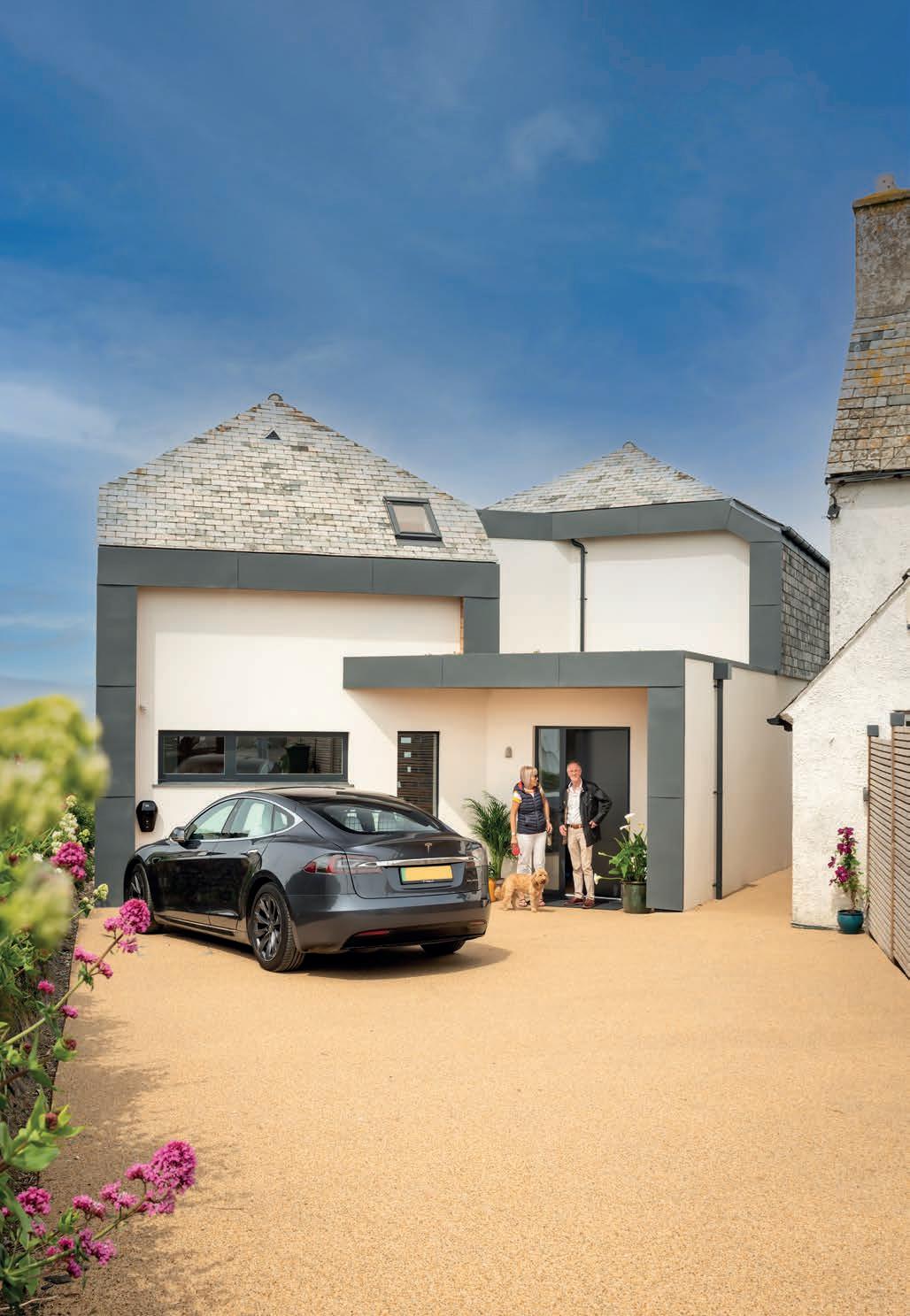


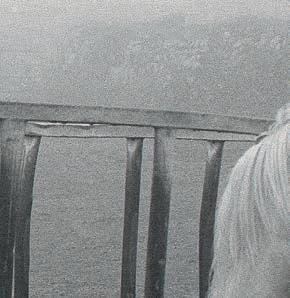





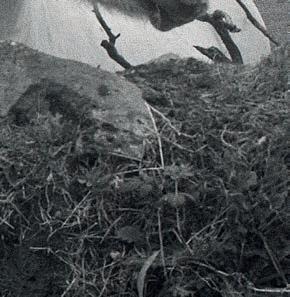







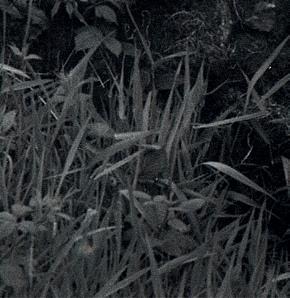

Photographer William Arnold turns his experimental photography on the ancient and modern aspects of our landscape.
Atmosphere is part of everyday life. That proposition applies to both meanings of the word. The first describes the gravitational pressures that wrap around the Earth and influence the weather. The second identifies the mood or tone we perceive in a place or a situation, or in an artwork like a song, book or painting. William Arnold’s photographs of country locations in Cornwall, which he made between and , resonate with atmosphere in both senses – but most of all with the second.
Arnold knows the landscape of these images well. He has walked and travelled through the county where he has lived for all but a handful of his 42 years. Although born in Manchester, he was a small child when his family moved to Cornwall. He teaches photography at Falmouth University and West Penwith provides a regular setting
for his research into our surroundings and the nature of his art form.
He has selected images to show at Hweg in Penzance. They are part of a larger project called Sunspots’ that extends its scope to comparable landscapes on the Hebridean islands of Harris and Lewis. What draws these places together is their long association with esoteric religion and sets of beliefs originating in prehistory.

This heritage has left its mark on the territory in the form of menhirs, or standing stones, and other interventions on the land that may have had roles in the rituals of ancient communities. Found over considerable distances in both Celtic regions, their similar shapes and sizes suggest that these blocks were identifiable types’ that these communities understood as having a specific purpose.
PREVIOUS





































Discover The Fitzroy, a stylish collection of one, two and three bedroom homes anchored by the vibrant Cornish coast. Exclusively for those enjoying life over fifty-five.
Prices from £495,000.
“I chose this development because of
“I chose this development because of the incredible seafront location, e Fitzroy boasts stunning panoramic views of Falmouth Bay and I’m so close to the buzzing coastal town.”
Pegasus Homes resident
Exclusive facilities

Breathtaking views
Resident’s lounge
Landscaped gardens
Terrace or balcony
Close to the sea
Close to amenities
Friendly on-site team
Guest suite
Car parking


Discover a new lease of life at a Pegasus community across England 01326 567 663
Discover a new lease of life at a Pegasus community across England 01326 567 663
thefitzroy@pegasushomes.co.uk
thefitzroy@pegasushomes.co.uk
thefitzroy@pegasushomes.co.uk
thefitzroy@pegasushomes.co.uk
of
visit pegasushomes.co.uk/company/legal/terms-and-conditions/
That repetition over place and time fascinates Arnold. He photographed the stone relics when he saw them. Some monuments appear singly and others in simple arrangements, like circles. That prompted him to make some images where several pictures are gathered into grid-like formations. They resemble a composite portrait of the characterful objects or a kind of catalogue recording their physical properties in a detached manner.
Later generations adopted routes across Cornwall that became pilgrim ways punctuated by stopping places, often signposted with markers. Such sites coincide with an older tradition that links water springs with pagan spirits that aid the living. The medieval Church recruited that belief to its purposes, rebranding these spots as Holy Wells.




duration of natural growth, and as sluggish time, an unhurried longeur that seems to envelope these scenes. A wayside cross at Lelant, an upright granite shaft probably intended as a route marker in the Middle Ages, has been joined by more recent route signifiers in one photograph a modern council road sign and an estate agents’ property sale board, a token of the modern faith in consumption.



Sites like the Well at Madron appear in Arnold’s choice of images. People still tie strips of cloth, or ‘clouties’, to branches of surrounding trees and bushes. They act as mementoes and also physical prayers for good fortune, so the ancient trust in metaphysics survives across time.

Arnold is interested in landscape history. Every part of the land is saturated with information about how it acquired the shape we experience today. Indeed, the role of humans in its physical evolution has been remodelled over millennia by settlement and cycles of cultivation. In another photograph, a piece of agricultural machinery that Arnold saw abandoned in a field near the “dancing” Merry Maidens stone circle. The recent interloper has a sculptural shape, a long, upraised arm that looks balletic. The tangled shrubs of the screening hedgerow behind perhaps dates back centuries.




Arnold uses his camera to imply different ways of looking at our surroundings and at the art form of photography. We think of a photograph as the speedy capture of an image. Arnold’s approach contradicts that sense of rapidity. Time is a feature in his work – as time drawn out, as in the patient
This artist has an eye for quirky instances of the human impact on the landscape. One print depicts the tracery of power cables stretched across the featureless sky, a newer generation of man-made landmarks that reshape the land. Will they last for centuries? In the distance is a constellation of streetlamps pierce the distant shadows, competing with light from ageless stars.
To make these monochrome photographs, Arnold worked at a time of day that offered stable light conditions. The overriding impression is that he came upon his subjects at dusk or in the later part of the year when days are shortest. There are no dramatic contrasts of light, a feature that imbues each view with a density that is rich and almost palpable. Our experiences of darkened places attune us culturally and emotionally to the possibilities of what might be there beyond our senses, lying on the cusp of our knowing.
Although he does work in colour and use digital cameras on other projects, these images were made in monochrome with traditional analogue camera and film, Then printed by hand as silver-gelatin prints, no computer software was involved. The human eye was the most sophisticated equipment employed. The appeal of this method, which dates to the invention of photography, is obvious in resulting image it is sharply defined and highly detailed, suspended in a gelatin emulsion that rests on the paper.
The close inspection of the prints seems permissible in the gallery because they are not portraits of people. In fact, there are no people in these pictures. That is significant. The viewer, who is not even in the same time or space as the events being looked at (some occurred as long ago as 2013), is not self-conscious about peering in. In itself, that generates another kind of atmosphere, of concentrated looking.
When that happens, images become a kind of evidence to be inspected. The contents appear objectified in Arnold’s descriptive approach. His process omits the sentimental attachment with the humanly recognisable. An urban comparison comes to mind from more than a century ago Eug ne Atget photographed the deserted streets and parks in Paris as if they were arrangements of still-life elements.

The process is ideal for black-and-white photography. It draws out that second definition of atmosphere, the figurative one where a pervading tone or mood characterises a particular setting. We connect with the abundance of shades of grey they pull the eye into the image and ignite the imagination.
Honeysuckle (Lonicera periclymenum), from Suburban Herbarium, 2015-19, unique projection photogram, silver-gelatin print, 12 x 16 in
As viewers, we cannot cut ourselves off from the associations we carry in our heads that we invest in the landscape. We have absorbed them from past personal experience or from other people’s sources, such as depictions on screen, in painting or literature. In a sense, that helps us to determine an atmosphere we can occupy. Cornwall’s Celtic history in particular has been profusely mythologised so that stones and memorials have acquired a profound symbolism. Arnold quotes a passage written by Ithell Colquhoun, the painter, occultist and theorist who settled in West Penwith in the middle of last century.




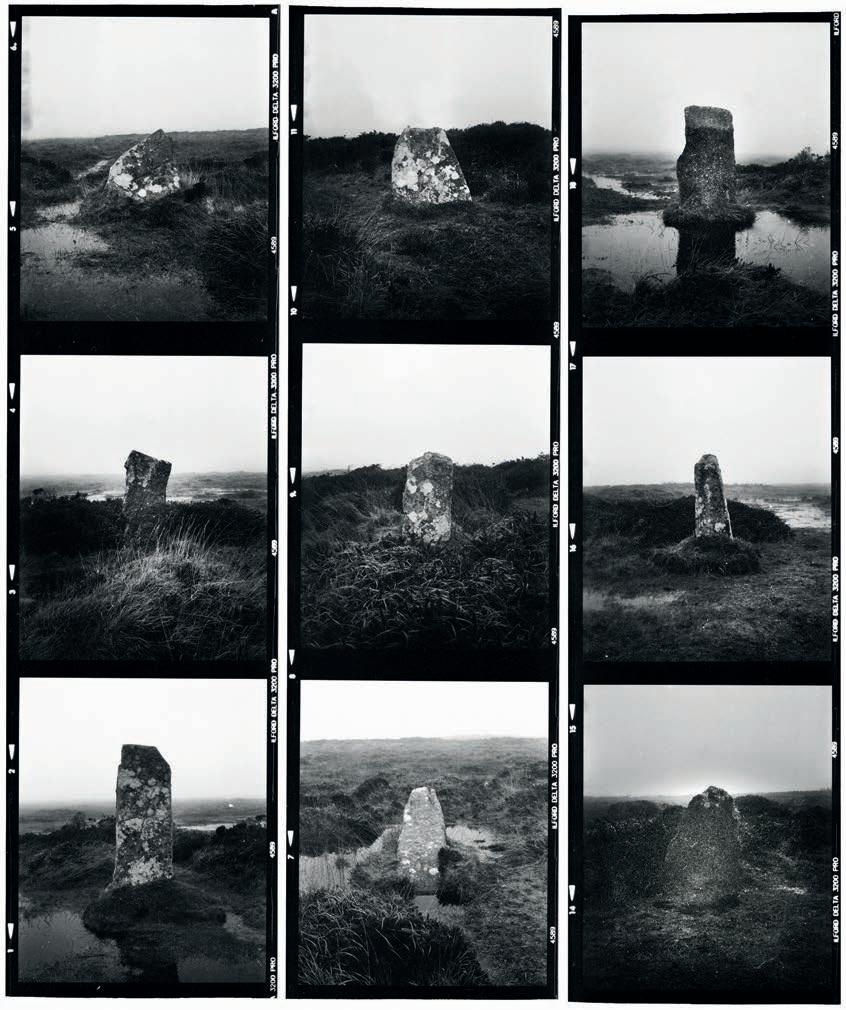
Compiling her book, The Living Stones: Cornwall, published in 1955, Colquhoun observed “How much primeval gloom can still lurk almost within earshot of a busy road!”
Colquhoun’s viewpoint was informed by her spiritual journey it shaped her work into astonishing navigations between the esoteric and surreal. Arnold perceives that contrast, too, but we acknowledge that he is not completely taken in by it. So, he balances it with the raw facts of everyday reality. They inject a banality that grounds free-floating contemplation of the location’s meanings.
His route is more practical, even scientific. He has described his use of photography as a process of “looking deeper into” a subject. Photography provides a document, a form of witness to what has stayed the same and what has changed. Working in series, as Arnold usually does, images examine our surroundings to illuminate systems of growth, usage and occupancy, and how man and nature have complemented and conflicted with one other across time.
He likes to classify, as in his montage of menhirs and medieval markers. The ordinary can look remarkable when a photographer decides to click the shutter on them and memorialise its enduring presence in that moment. Or the ordinary can open the mind to the unanticipated or unknown.
That was the case with his series called “Cauliflower Fields Forever ” from . On Armistice Day that year, the centenary of the end of WW , he gathered cauliflowers grown to maturity in Nancekuke near the
Remote Radar Head at Portreath. The location amplifies our interpretation of these portrayals of dumb vegetables. From the early 1950s and for the next 20 years, the former RAF station had been an outpost of Porton Down, the state’s technology lab for developing chemical weapons, a purpose kept secret at the time.
Arnold’s moments stand out for their transfixing ordinariness – the horse and feeder in the field the dark and swampy copse where a tyre hangs from a branch as a swing to play on the solid hawthorn tree on an exposed plain bent by the force of the wind. They still have the ability to astonish, to stop us in our tracks.
While the “Sunspots” photographs are more varied in subject and poetical in tone than his many other projects, Arnold is not a photographer who “points and shoots”. His projects emerge from a rigorous programme that involves planning, action, technical process and then documentation in the form of labelling. Themes of light, place and composition are found in them all. He feels an affinity with artists from the radical 1960s, such as the German duo, Bernd and Hilla Becher, who challenged the perceived gap between documentary and fine-art photography.
That shared interest in types underpins his series called “Suburban Herbarium” (2015. He had a plan to pick examples of the vascular plants that grew in a defined area around his studio. That ground was made up of industrial wasteland, marshes and back paths, areas that people disregard as uninteresting.
Taking a single specimen of each plant, he made photographs in the studio. Projecting light through them onto a plain background, he photographed the enlargement. The technique is fuelled with investigative rigour and not far removed from the cyanotypes made by early Victorian pioneer of nature photography, Anna Atkins, and represents an heir’s inventive homage.
The results are spellbinding. They reveal with x-ray-like insight the structure and unsuspected beauty of ragwort, hairy bittercress and other unexalted species frequently derided as weeds. “I was struck by the haphazard mix of native plants living alongside agricultural escapees and invasive garden species,” he remarked at the time. The atmosphere surrounding them becomes intense, highly attentive of details that reveal these “throwaway” plants’ complex identities. The viewer might feel transported to a lab and participating in experiments. In a way, that is true. Our expectations of our environment are refreshed, even altered. Our notion of ephemerality is challenged.
the sun. His intervention was methodical and long-term rather than an immediate spectacle. Harnessing the forces in nature rather than humans, the transformation of the ground emerged over spring and summer months. And solar light was used to record the plants’ growth – and its devastation by birds – by means of a pinhole camera dependent on the sun.
The background is always time, the property from which that intimate form of atmosphere arises. Arnold gives it materiality in the deep blacks of photographs, in the gradual emergence of what an image represents in its broadest interpretation. At the same time he is an artist of the moment, alert to the environment, its overlooked wonders and evident vulnerability.
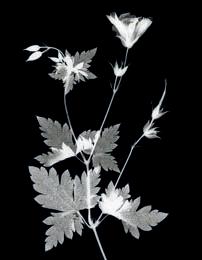
Arnold engages with the land in other ways. In March to September 2022, he made his own temporary landmark in the garden at Kestle Barton near the Helford River. He planted sunflower seeds bought in packets from discount hardware stores into a floral recreation of the area’s prehistoric circular monuments that, in all likelihood, venerated
Geranium (Geranium oxonianium), from Suburban Herbarium, 2015-19, unique projection photogram, silver gelatin print, 12 x 16 in
Like seeds in nature, his images are disseminated through his publications. They, too, take different forms and are well worth gathering. His first monograph Suburban Herbarium was published by Uniformbooks (2020) and reprinted (2022). His latest book, Sunspots (2023) was released by his own imprint, Bare Pipes Press, and is held in the collection of the National Art Library, at the V & A in London.
William Arnold: Sunspots, The Last Hundred continues at Hweg, 34 Causewayhead, Penzance, until 12th April 2025. All images © William Arnold
williamarnold.net
RIGHT
Stinging Nettle (Urtica dioica), from Suburban Herbarium, 2015-19, unique projection photogram, silver-gelatin print, 12 x 16 in
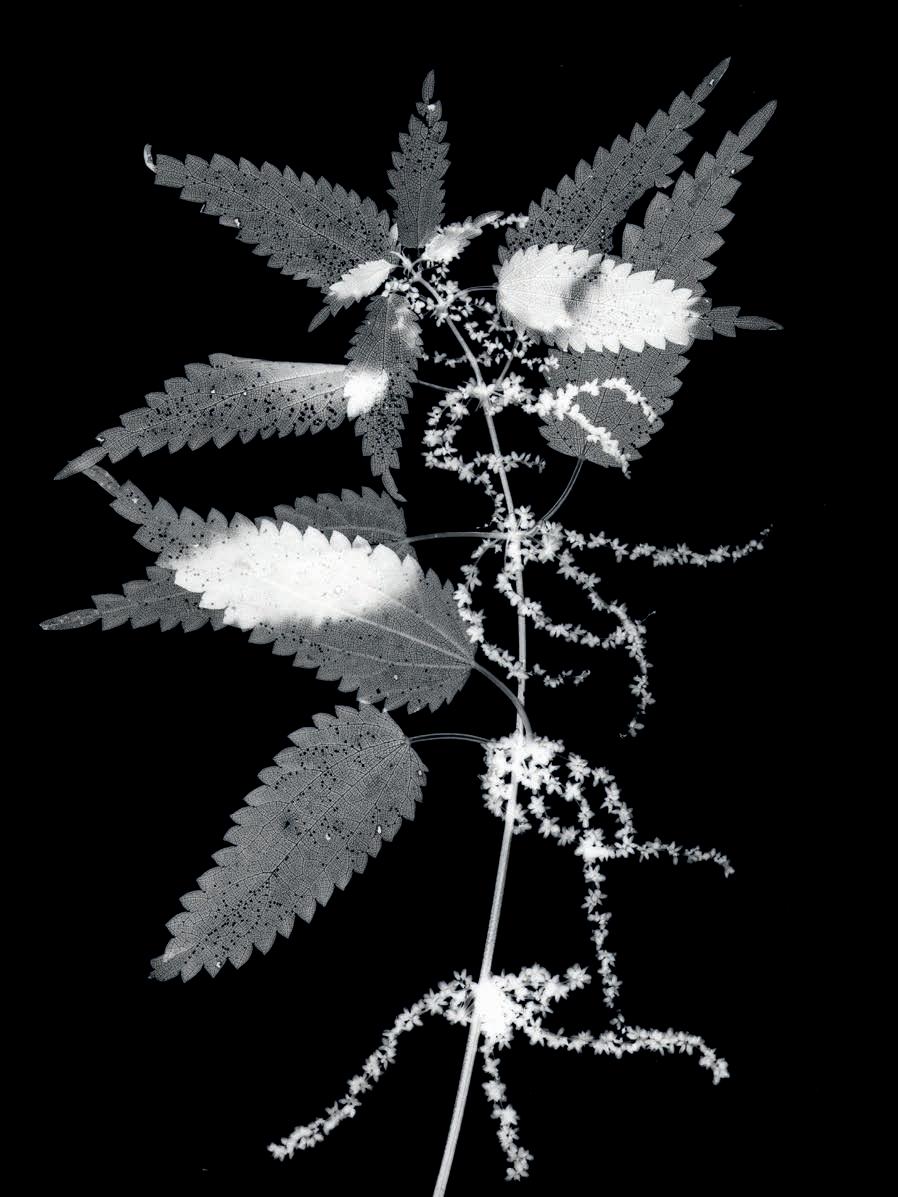

WORDS BY JAMIE CROCKER
urg Island otel o ers guests a rare glimpse into a bygone era, where Art Deco symmetry is a counterpoint to the natural beauty of the Devon coast.
There are few places in Britain where time appears to holds its breath, where the ebb and flow of the waters dictates the day, and where history is not just preserved but actively lived. Burgh Island Hotel is one such place. Perched on its tidal island, this Art Deco retreat has played host to royalty, writers and revelry for nearly a century. Owner and co-managing director Giles Fuchs shares his insights into the island’s past, its enduring appeal and the delicate balance of maintaining tradition while incorporating expectations of modern luxury.
then reconnecting to the mainland influen e the uest e erien e and the hotel s o erations?

Burgh Island’s tidal nature establishes a uni ue rhythm that de nes both the guest experience and the hotel’s operations. When the tide rises, the island becomes completely cut off from the mainland, creating a sense of seclusion and exclusivity for guests, allowing them to truly disconnect from the outside world and immerse themselves in the island’s atmosphere.
The tidal nature of Burgh Island creates a natural rhythm to life here. How does becoming an island and
However, this daily transformation also presents logistic challenges for the hotel. We have long relied on our sea tractor, providing both a practical solution and a memorable experience for guests.
The sea tractor has become an iconic symbol of Burgh Island. Could you share its history and any memorable stories connected to this unique mode of trans ort?
The Burgh Island sea tractor, Trundle, was designed in 1969 by Robert Jackson CBE and paid for with a case of champagne, and this one-of-a-kind hydraulic marvel has been ferrying guests across the waves since the 1970s.
Recently restored to her former glory, Trundle ensures that every arrival feels like stepping into a story, just as it did for past visitors like Agatha Christie and Winston Churchill. When the tide is in, she glides across the water, offering guests a truly unique way to reach the island.
atha hristie drew si ni ant ins iration fro ur h sland writin two no els onne ted to this la e ow does the hotel honour and reser e this literary le a y and do uests still see out these onne tions?
Agatha Christie’s deep connection to Burgh Island remains an integral part of its identity. The island served as inspiration for two of her most famous novels, And Then There Were None and Evil Under the Sun. In recognition of this literary legacy, we have carefully preserved Christie’s former writing retreat, which is now the Beach House suite. Guests can stay in this beautifully restored accommodation, immersing themselves in the same setting that fuelled Christie’s imagination.
We also host special events and experiences that pay tribute to her work, including
themed evenings and murder mystery weekend. We recently had Dr Mark Aldridge, one of the most renowned Christie historians, visit us at Burgh last December to give a tal . any visitors s eci cally see out Burgh Island for its Christie connections, eager to walk in the footsteps of one of literature’s greatest mystery writers. This has also attracted broadcast media features such as David Suchet’s Poirot, a Lucy Worsley documentary, and most recently BBC’s Towards Zero. Additionally, we are planning to host a literacy programme that invites renowned authors to speak about their latest novels. hese sessions will offer attendees a unique opportunity to gain insights into the creative process, themes, and inspirations behind their work.
The hotel has maintained its Art Deco character through various renovations. What have been the greatest challenges in reser in these histori al features while eetin odern lu ury e e tations?
Since acquiring the hotel in 2017, my vision has always been to honour the rich Art Deco heritage of this iconic retreat while ensuring it meets the expectations of modern guests. This is no easy task, given the hotel’s exposed coastal location, where the elements constantly test the integrity of the building.
ecuring a . million re nancing ac age with Metro Bank has been a crucial step in this journey. This funding has allowed us to restore the hotel’s stunning Art Deco interiors, safeguard period antiques, and ensure our original Crittall windows remain intact. n addition, we are ma ing signi cant structural improvements, including a new front roof, new water treatment works, and
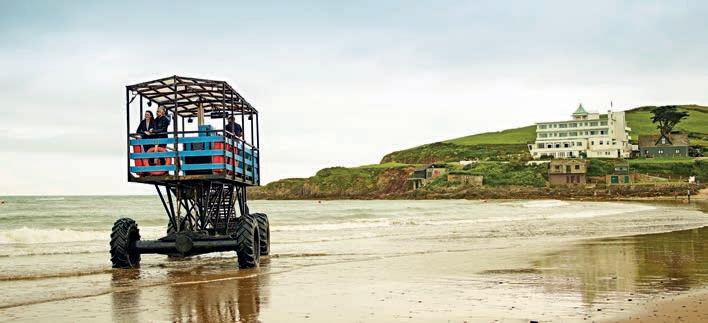
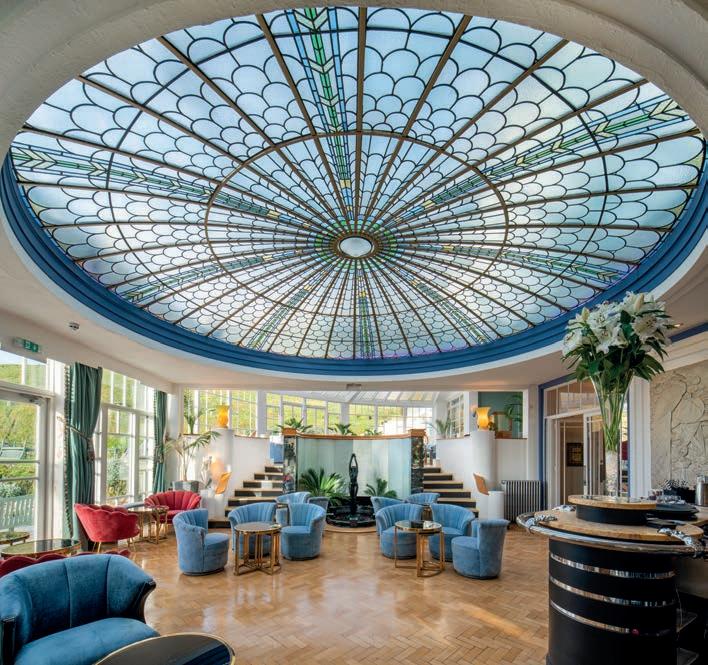
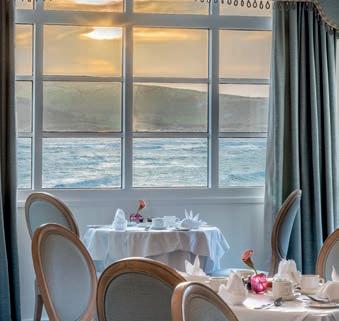


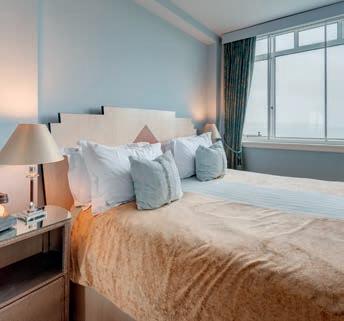

reinforced sea defences to protect the island from ongoing coastal erosion. With these investments, we are not just maintaining the hotel – we are securing its future for generations to come.
he il hard nn dates to a in it si ni antly older than the hotel ow has its role transitioned from serving sher en and s u lers to e o in an inte ral art of the island s hos itality?
The Pilchard Inn has played many roles throughout its long history, originally serving local shermen and smugglers. Today, it continues to be an essential part of the island s hos itality, offering guests a taste of its storied past. Unlike the glamorous Art Deco hotel, the inn embodies a more rugged, historic charm, with its weathered stone walls and wooden beams preserving the atmosphere of centuries gone by.
Our favourite story is that of the smuggler Tom Crocker, who used the inn as a refuge to store contraband goods. His ghost is said to wander the island, causing mischief and looking for his lost treasure, and we celebrate this every year on Tom Crocker Day, inviting the local South Hams community for a day of family-friendly festivities in support of charity.
Burgh Island has hosted numerous luminaries throughout its history – from Noël Coward to the Beatles. Are there any lesser nown stories a out fa ous uests that re eal so ethin s e ial a out the island s hara ter?
Throughout its history, Burgh Island has been a retreat for royalty, writers, and celebrities seeking privacy and inspiration.
Edward VIII and Wallis Simpson found refuge here during their controversial romance, Winston Churchill is said to have met with President Eisenhower on the island before the D-Day landings, and John ennon famously left his guitar at the hotel when the Beatles played in Plymouth!
The South Devon coastline has a distinctive beauty that changes dramatically with the seasons. How does the island s relationshi with the ele ents fro su er sunshine to winter stor s sha e life at the hotel?
The South Devon coastline plays an essential role in shaping life on Burgh Island, being an Area of Outstanding Natural Beauty. During the summer months, the island is bathed in golden light, with guests enjoying sunlit terraces, beachside walks, and al-fresco dining. However, winter transforms the island into a dramatically different setting, where owerful tlantic storms crash against the cliffs, creating an awe-inspiring spectacle. You can tell where Agatha got her inspiration from!
o al sour in a ears i ortant to your ulinary hiloso hy ould you ela orate on your relationshi s with e on rodu ers and sher en and how the surroundin lands a e influen es your enus?
Burgh Island Hotel takes great pride in our commitment to sourcing 80% of our produce locally, working closely with evon s farmers and shermen to bring the freshest ingredients to its kitchens. From the Grand Ballroom to the Nettlefold and to the Pilchard, our menus feature seasonal produce, with seafood sourced directly
from nearby waters and meat and dairy products supplied by trusted local farms. This dedication to regional ingredients not only ensures exceptional quality but also supports the local economy and promotes sustainable dining. The coastal setting naturally influences the culinary offerings, with dishes that highlight fresh sh, shell sh, and traditional ritish flavours, all enhanced by the surrounding landscape.
he la tie dinner tradition continues at Burgh Island. In an era of increasingly asual hos itality what value do you see in maintaining these more for al traditions?
The black-tie dinner tradition at Burgh Island is more than a dress code and is an invitation to step into a bygone era of timeless elegance and re ned glamour. n an age where casual hospitality has become the norm, the Grand Ballroom remains a sanctuary of Art Deco sophistication, where guests are encouraged to don their nest evening attire and revel in the splendour of the 1930s. Surrounded by original Art Deco murals and furnishings with live jazz accompanying dinner in the ballroom, the experience is nothing short of enchanting.

comfort in their accommodation. The hotel features a range of Art Deco-inspired rooms and suites, each named after a notable ast guest. u urious suites offer incredible sea views, while the Beach House provides a secluded retreat. The rooms do not contain any electronic devices, with TVs and radios only available on request, allowing guests to truly escape from modern life and immerse themselves in the natural beauty of the island. During the hotel’s initial refurbishment in 2 1 , after bought the island, we collaborated closely with Simon Kirby, one of the world’s leading Art Deco specialists who described the hotel as an “Art Deco masterpiece”, along with interior designer Sam Kopsch, to ensure all updates remained faithful to the hotel’s distinctive architectural heritage. Simon Kirby’s expertise helped preserve the authentic glamour and eternal modernity that de ne the hotel s uni ue character.
Could you give some detail as to what sort of thin s uests are li ely to e e t in ter s of a o odation and uisine?
Guests at Burgh Island Hotel can expect a blend of historical charm and modern
The dining experience is equally exceptional, with black-tie dinners in the rand allroom, re ned coastal cuisine at the Nettlefold Restaurant, champagne afternoon tea and coc tails at the alm Court Lounge, and rustic pub fare at the historic Pilchard Inn. While the formality of the occasion differs across each of our eateries, the hotel s culinary offerings aim to celebrate the best of ritish, influenced by the island’s dramatic coastal setting.
burghisland.com



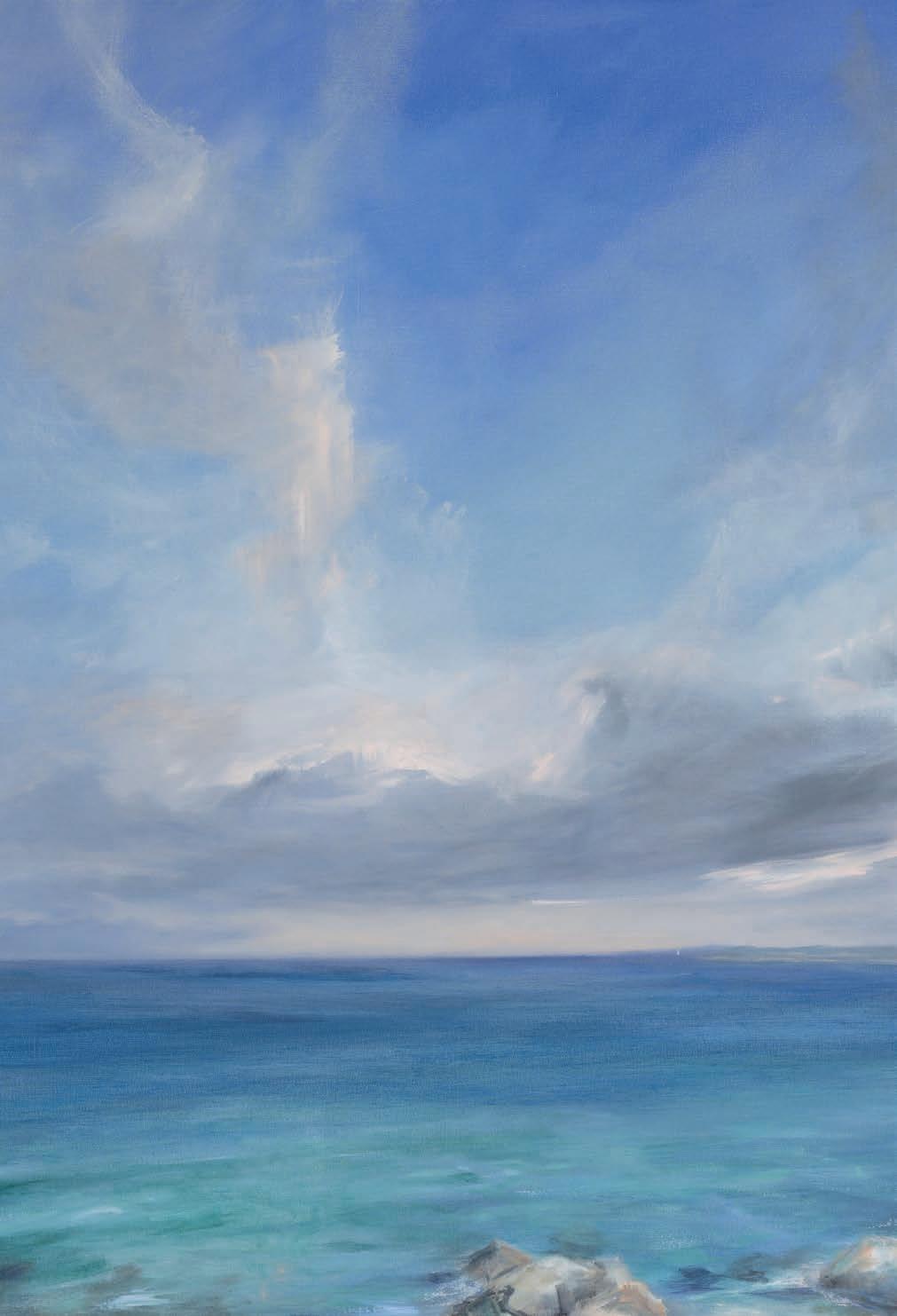



TTwo artists whose work complements each other sublimely are showing together at The Old Coastguard in Mousehole this spring.
he Old Coastguard is a seaside hotel in Mousehole looking out over a spectacular stretch of coastline in the far west of Cornwall. Here, sub-tropical gardens slope down to the harbour wall, where a subtle glass balustrade – punctuated by Tom Leaper’s sculpture, Sun Sail – is all that separates you from the glistening waters of Mounts Bay. The hotel’s garden room opens out onto a terrace which shares this coastal vista of ever-shifting colours, light, and weather, reaching to the horizon.
most popular sights with visitors these days, but for the generations of artists inspired by the ephemeral light of the Cornish coast, the horizon itself needs little embellishment – it’s a protagonist in its own right.
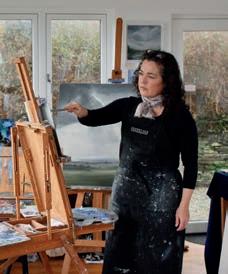
It’s a horizon which has seen everything from Spanish raiding parties and shipwrecks, to storms and Scillies-bound steamships. Gig rowers, dolphins and the famous red-sailed luggers are amongst the
Over the past few years, the hotel has forged a reputation for exhibitions of work by contemporary artists working in Cornwall, or with strong connections to the place where the land meets the sea. All under the supervision of The Old Coastguard’s Curator, Gillian Cooper.
An artist herself, Gillian uses her connections with fellow creatives, local galleries and research trips to artists’ studios across the region to seek out art which complements the space she oversees perfectly. Art has a permanent home

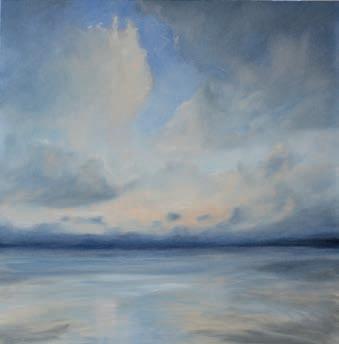


here, and owners Charles and Edmund Inkin see it as an integral part of the soulnourishing atmosphere provided at The Old Coastguard and its sister inn across Penwith Moor, The Gurnard’s Head. The annual spring and summer show is a highlight of the calendar for art-loving locals and visitors alike.
This year, Gillian has chosen two artists whose horizon-scanning artistic impulses unite them around a very appropriate theme for the setting. Painter, Laura Terry, and ceramicist, Ceri Shaw, first met when Ceri visited Laura’s stunningly situated studio near Trebarwith during Open Studios and have kept in touch ever since, recognising shared themes in each other’s work despite their different mediums.
Laura’s atmospheric landscape paintings seek to capture shifting light and those fleeting moments at the edges’ – the blurred boundaries of night and day, sea and land, shadow and light –when the atmosphere subtly shifts. In her oil paintings, the horizon becomes the stage for a symphony of different notes which overlay and entwine, achieving a finely balanced harmony.
favourite subject of course, but she also likes to travel to other parts of Cornwall to gain inspiration, including Bodmin Moor, Lamorna and St Ives. “In every place the light is so different,” she explains, “you could almost be in a different country from one cove or headland to the next.”

It’s clear to see from Laura’s canvasses that skies – and clouds specifically – are her passion. “Inspired by Constable’s work, I spent a year painting clouds during my Fine Art degree,” she explains. “That experience really underpins my work and now, here in my studio I get to watch the clouds constantly changing over the sea as I work.” The influence of painters like Constable and Turner is clear to see in Laura’s work, and her visual immersion in the constantly shifting light and weather of the coast infuses itself into every wispy cloud or reflection of light on the sea.
Like many of her fellow landscape artists, Laura undertakes small preparatory sketches and watercolours on her walks along the Cornish coast. North Cornwall, around her home in Trebarwith, is a
Meanwhile, ceramicist Ceri has an equal fascination with landscape and the dividing lines within our natural surroundings. Although Ceri lives in Bath she spends plenty of time in Cornwall, specifically in the area around Laura’s home and studio, which is a particularly dramatic and rugged stretch of coastline. Like Laura, Ceri also paints, sketches and takes photographs, to use as source materials when creating new work, conceiving each vessel as an abstracted expression of the forms she perceives in the landscape.
ABOVE
Ceri Shaw


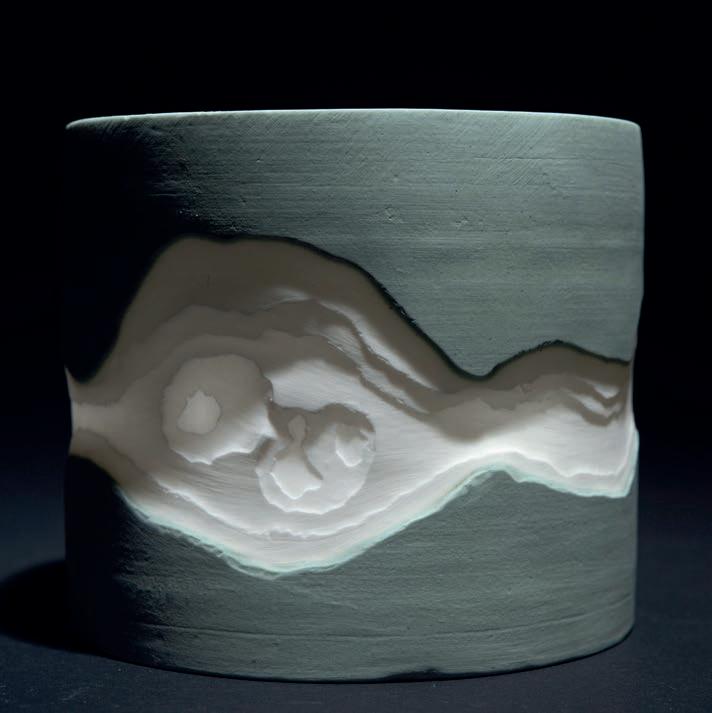




















With departure points in Penzance, Land’s End, Newquay, and Exeter—plus seamless air and rail connections—getting to the Isles of Scilly, just 28 miles off the coast of Cornwall, has never been easier.
Residents of Cornwall travel from just £25
SKYBUS | Land’s End Airport
Return flights operating Mon-Sat from 08:15 - 17:55 in peak season.
SCILLONIAN III | Penzance
Operating Mon-Sat from Penzance (and Sundays in peak season), departing at 09:15 and returning at 16:30, with 06:45 outward and 17:15 return on double sailing days.


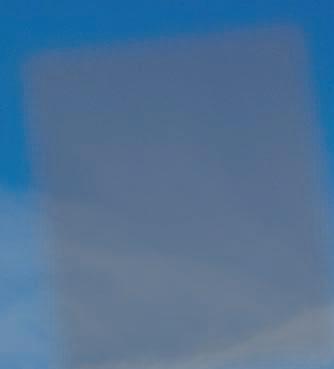


Whether you’re planning an extended stay or a memorable day trip, your adventure starts here. Visit the islands that are easy to reach, and impossibe to forget...



































































Her fine bone china vessels are slip cast in plaster moulds using a liquid clay. These simple and delicate cylinders are then hand-altered when they come out of the mould. Incised lines are created using a process called water erosion, where a masking fluid protects an area of the clay surface while another area is wiped away, effectively peeling back the layers in a process which mirrors natural erosion.
Sometimes this is a very deliberate form of mark making, but elsewhere it’s open to chance and responds to the behaviour of the material itself. “Fine bone china has a kind of muscle memory, so sometimes you remove it from the mould and there are already imperfections. I can work with these, using them as openings to explore ideas. Sometimes with my water erosion method I can go entirely through the vessel, but people seem to like these pieces as it introduces an element of the unexpected.”
When lit from within, Ceri’s delicate pieces glow beautifully, the eroded lines illuminated and suggestive of the rise and fall of the landscape on the horizon. They also recall the passing of geological time

as evidenced by layers of rock or the shape of a watercourse and the patterns and textures formed by natural forces in the landscape over millennia. Other vessels in Ceri’s current body of work are graced with painterly brushes of colour inspired by forms in the landscape, or incorporate sand to create an additional layer of texture.
“When I spend time in Cornwall for research or to stock up on inspiration, I’m always trying to see the contrast in things,” says Ceri. “That could be a line in the sand made by the prevailing wind, the horizon line, or a river cutting through the rocks. The dividing lines or edges of natural forms and phenomena interest me aesthetically but also for the unpredictability they bring, the possibilities they suggest, and the awareness they create of how small and insignificant we are in the context of this rugged, dramatic landscape.”
or on s show n t he ld o st rd etween th r l nd th ne nd eet the rt sts e ent t es l e on th y, to wh h ll re wel o e old o st rdhotel o
WORDS BY SARAH FERRIE
Let me get my cards on the table straight away, I am a big fan of Cornwall in all its shapes, sizes and seasons. I love that one day you can fi nd yourself taking in the wonder of a vast, three-mile sandy beach, the next you might be tucked into a tiny fishing cove surrounded by tales as old as time. From birdwatching to Boardmasters; sailing to sandcastles and mines to museums; it’s all here. Ask any resident, we love our day visits. Around half of all visitor days each year, so that’s around seven million, are Cornwall residents on day visits... and that includes me. I must make up at least 50 of that seven million!
improve the quality of life for residents as well as visitors, and this is important. The stats report Cornwall’s visitor economy is valued at 2b each year, makes up 20 of Cornwall’s GDP and around a third of all households benefit directly or indirectly from tourism. It has a big impact... so can make a big difference and that’s why it matters.
The range of activities, places to stay, to see and to enjoy keeps evolving and despite universal economic and social challenges, to which Cornwall is not immune, the Cornish welcome is as warm as ever
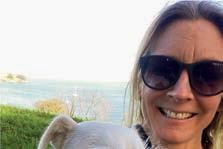

Long famed for its mild climate, the wonderful mix of landscape, culture, heritage and fantastic food is perhaps something that you might start to take for granted, but if you stop and look with fresh eyes it is wonderful. It is no wonder it remains a top destination for so many people time and time again.
It’s been fascinating watching the offer evolve over the years. Yes, there are challenges, but there is growth, and good growth at that, with overarching aims to achieve sustainability targets and to
Whether you’re setting out on the South West Coast Path, having a cream tea on the beach or dropping on a gallery or museum you’ll fi nd people will give you a smile and probably a few tips for other outings… and that’s one of the joys of Cornwall, there’s always something new to discover and, whoever you need to entertain, the right answer is probably around-about half an hour away!
Sarah is a non-executive director of Visit Cornwall, the Offi cial Tourist Board for Cornwall.
visitcornwall.com
Sarah Ferrie





















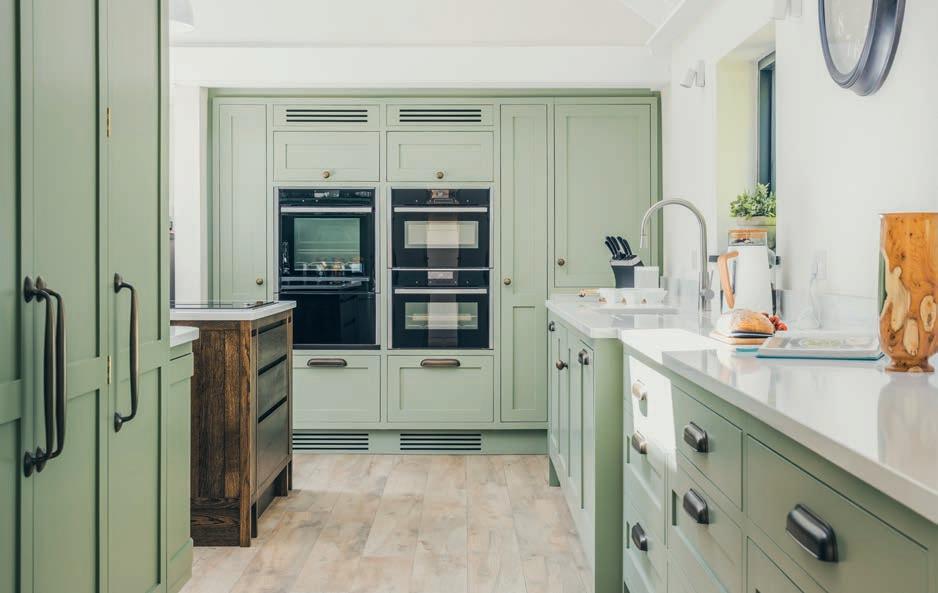



Bespoke furniture and luxury interiors handmade in Cornwall – from unique, one-off designs to entire room transformations to tailored joinery packages.
Harnessing 35 years of experience, Rozen’s highly skilled team of crafters are dedicated to the finest standards. Making everything from freestanding kitchen units to bespoke dining tables to beautiful bedroom furniture and more, our craftsmen pour precision, care and artistry into every job. B E S P O K E F U R N I T U R E M A K E R S


